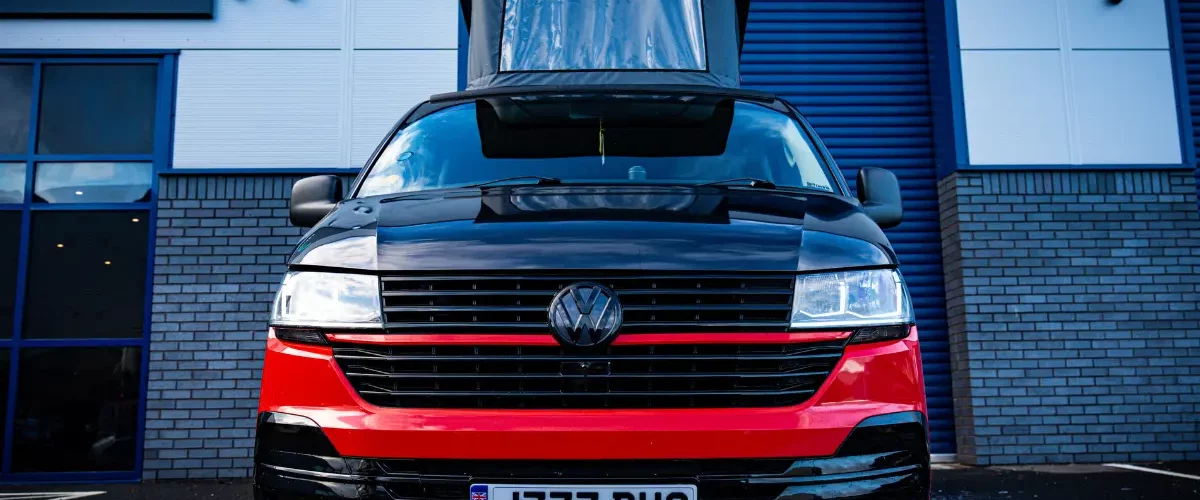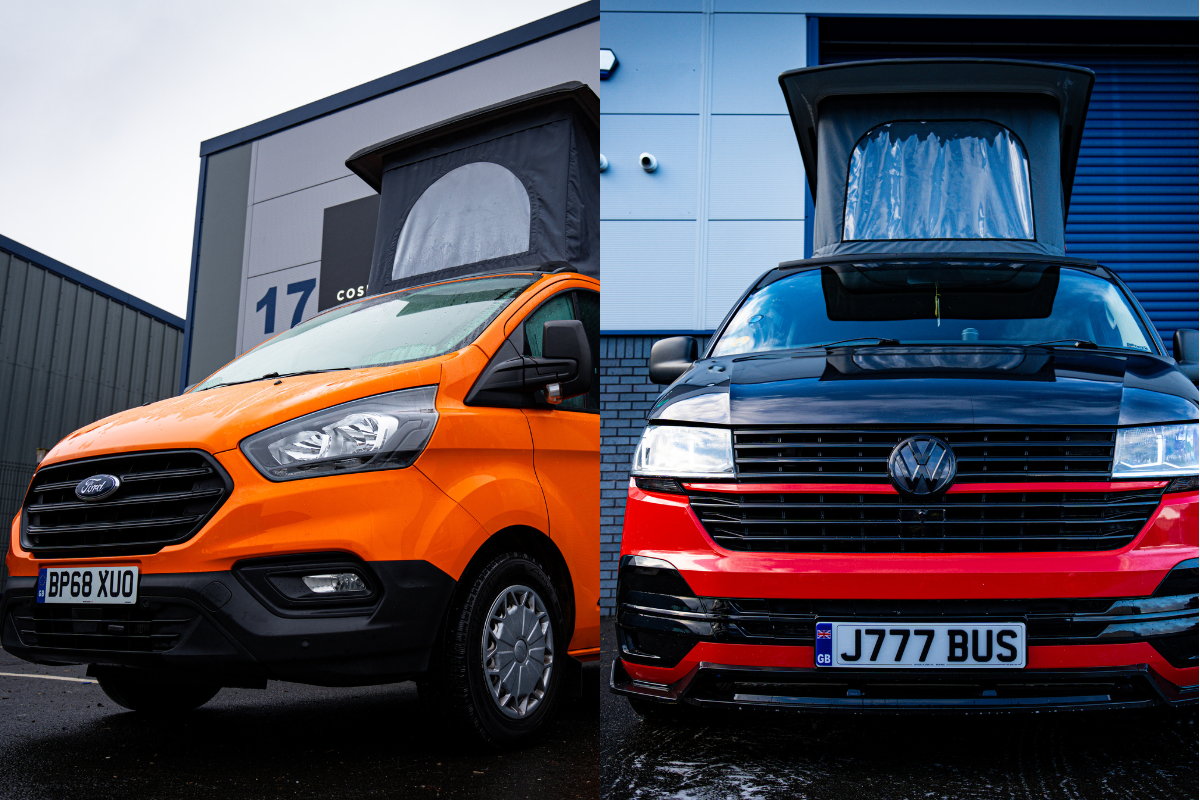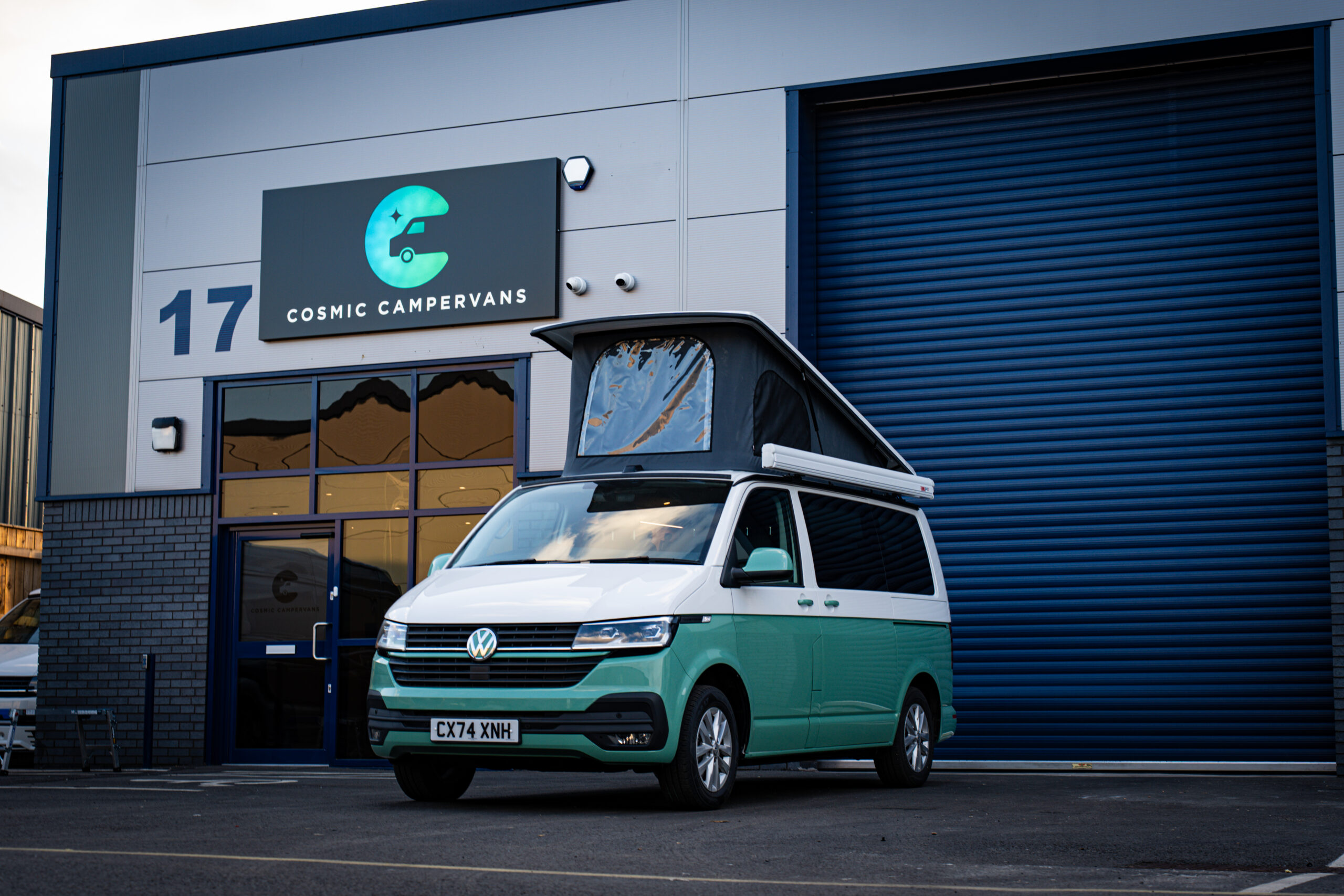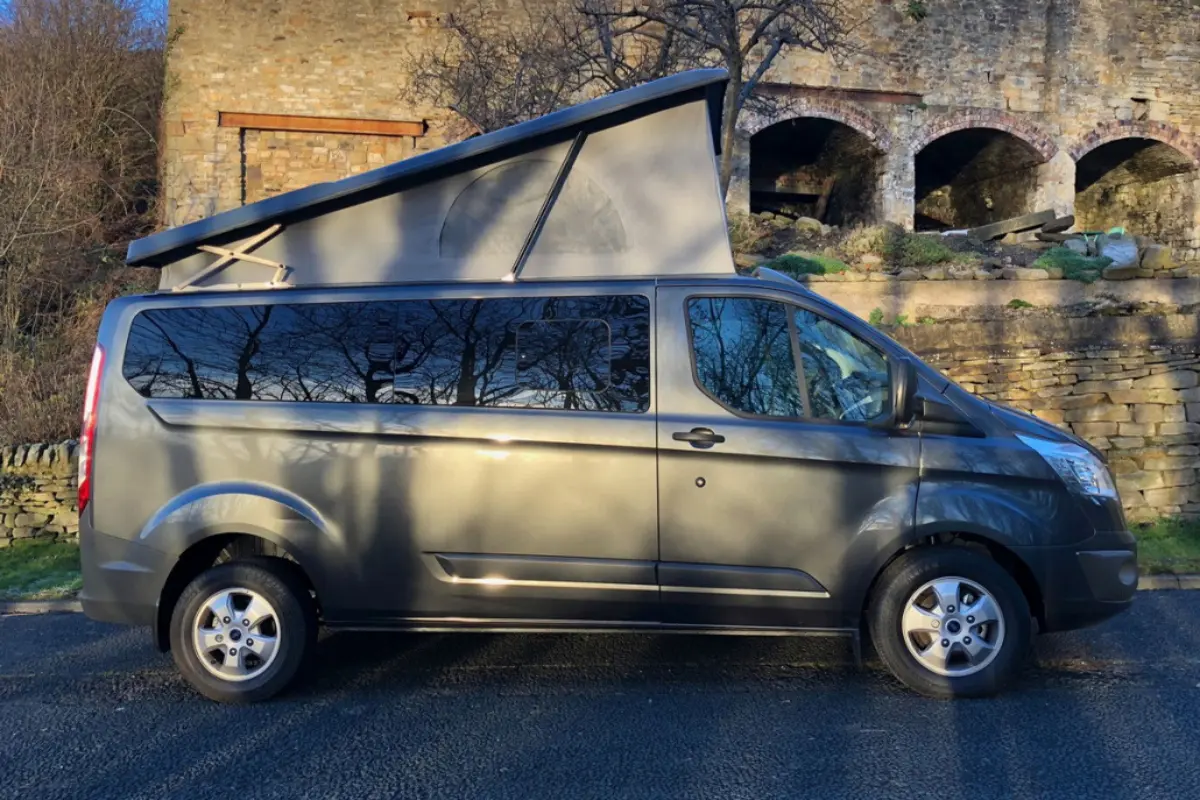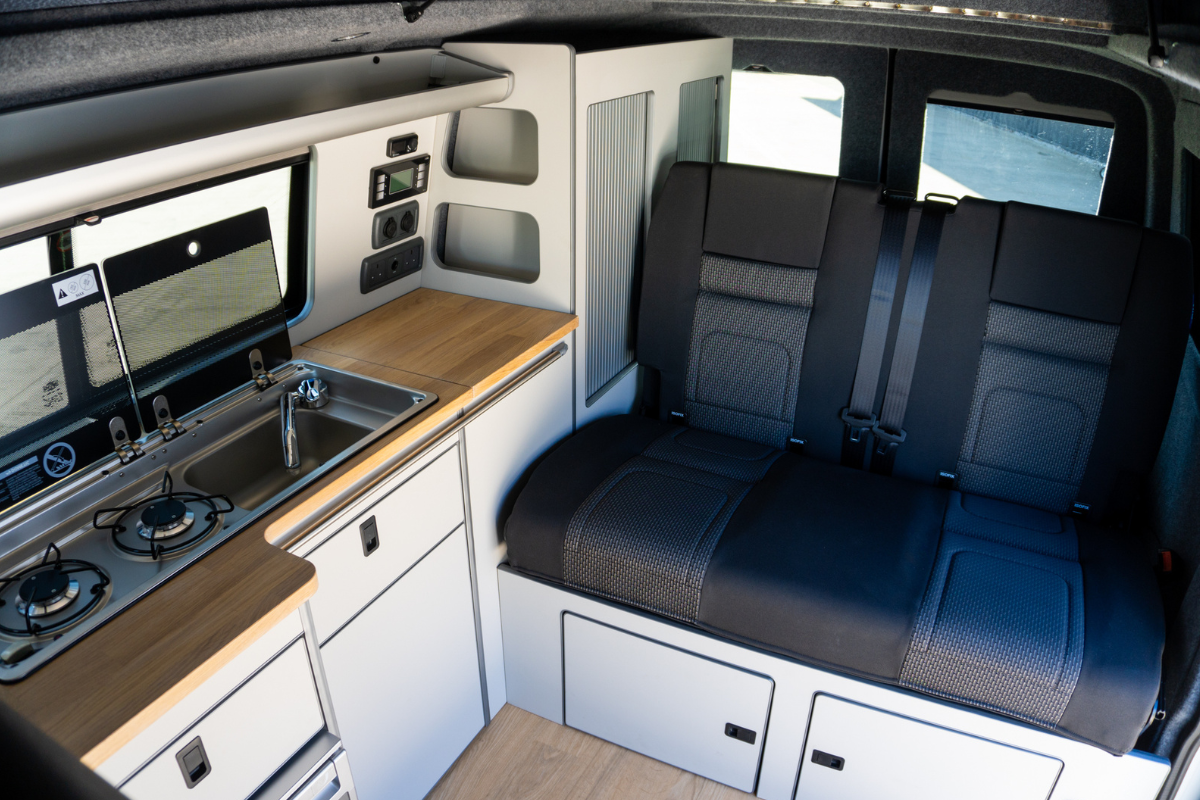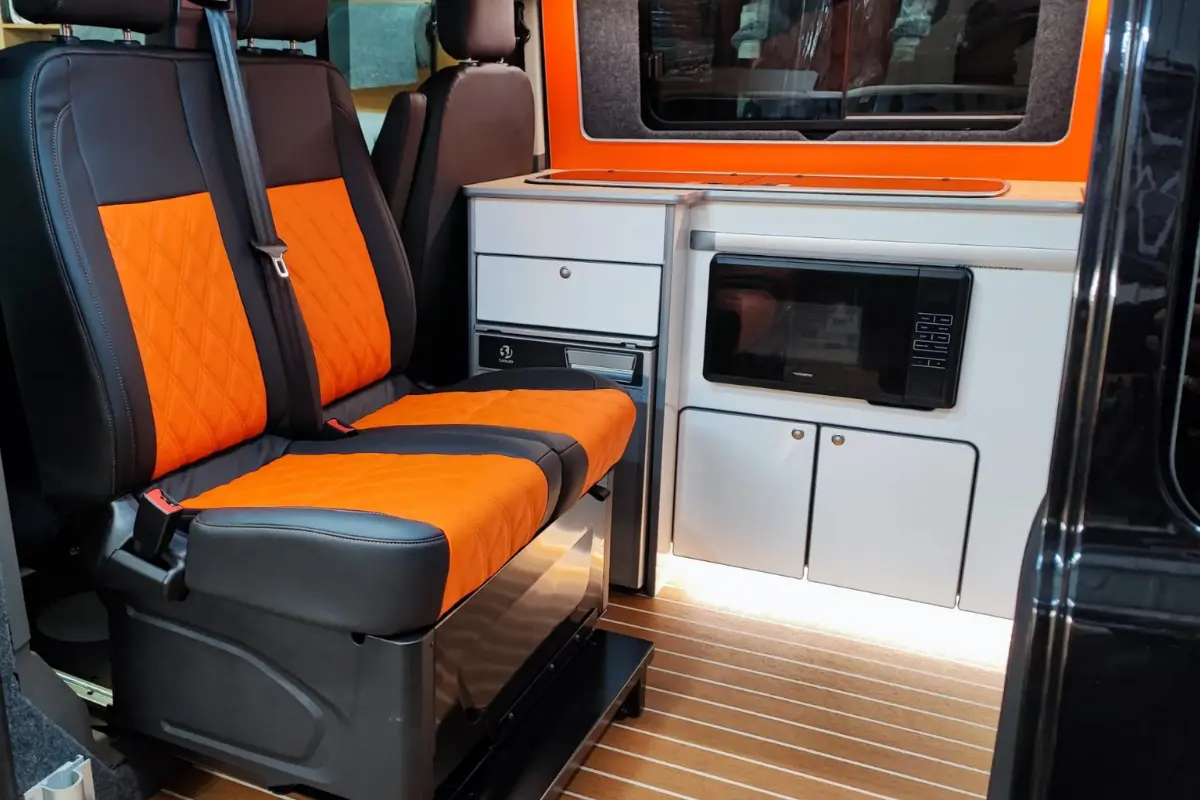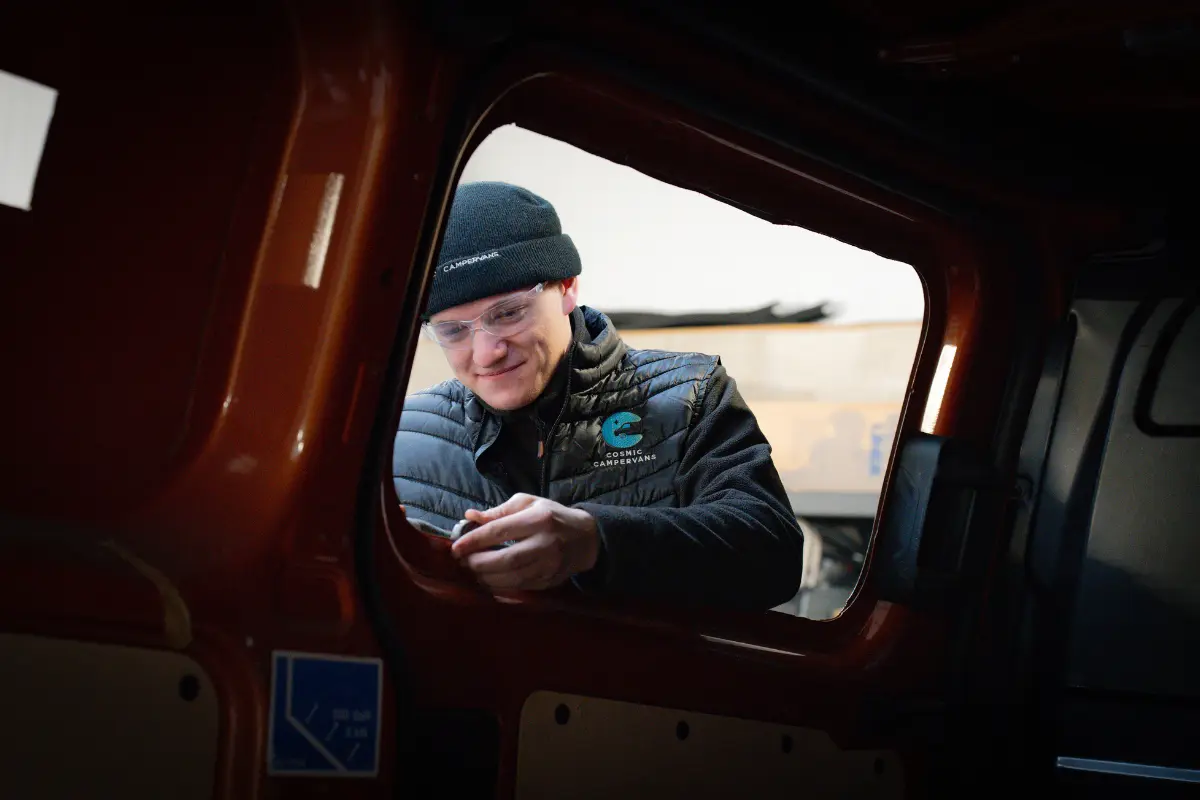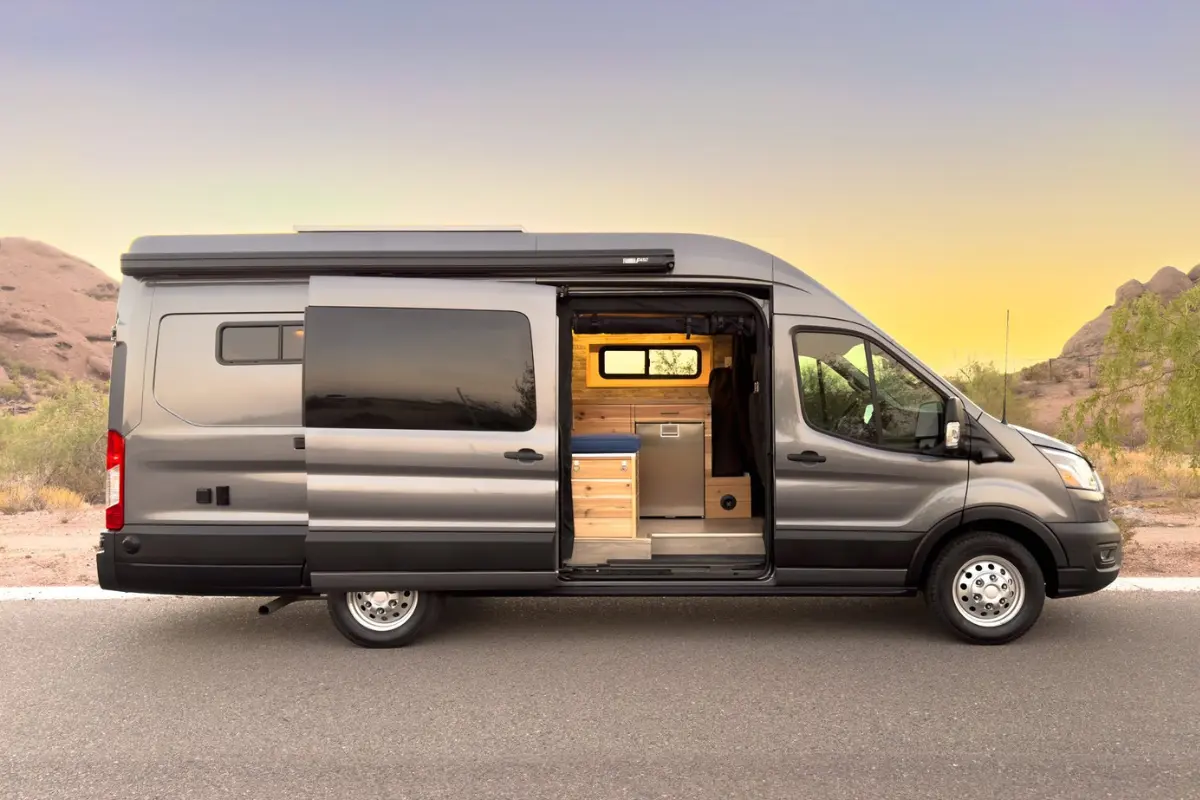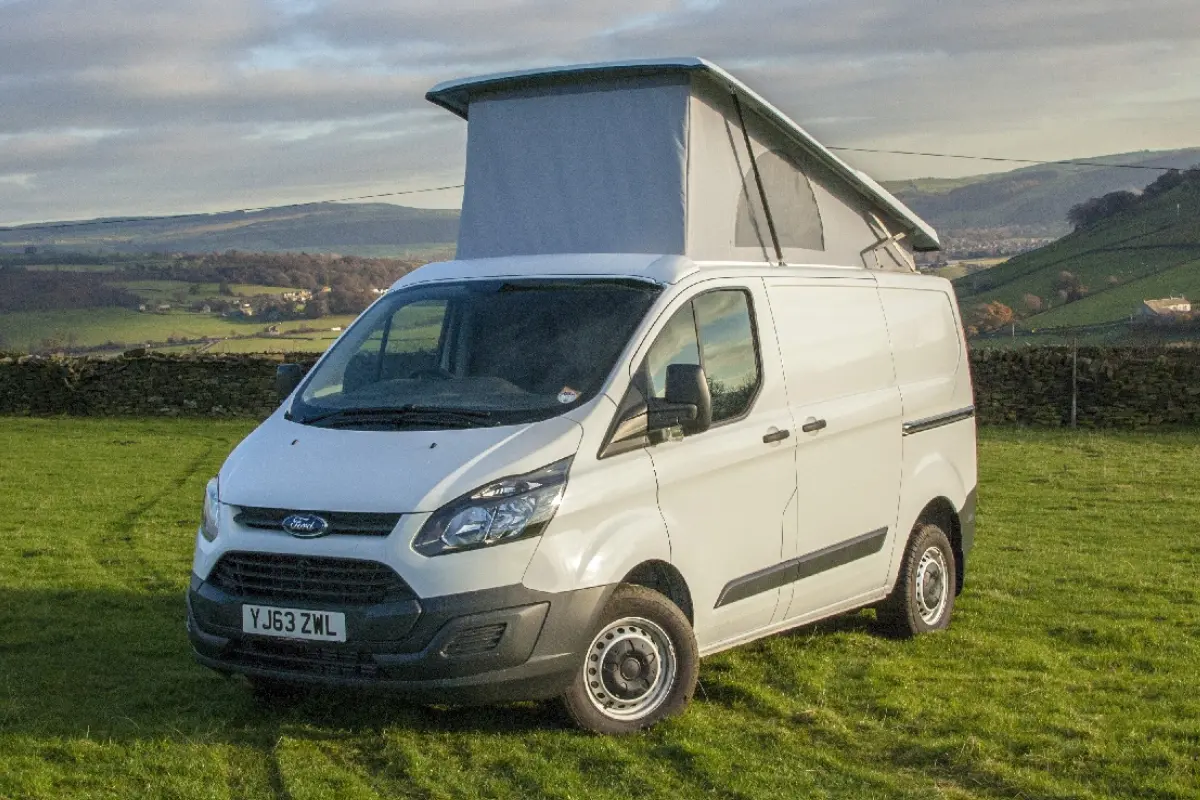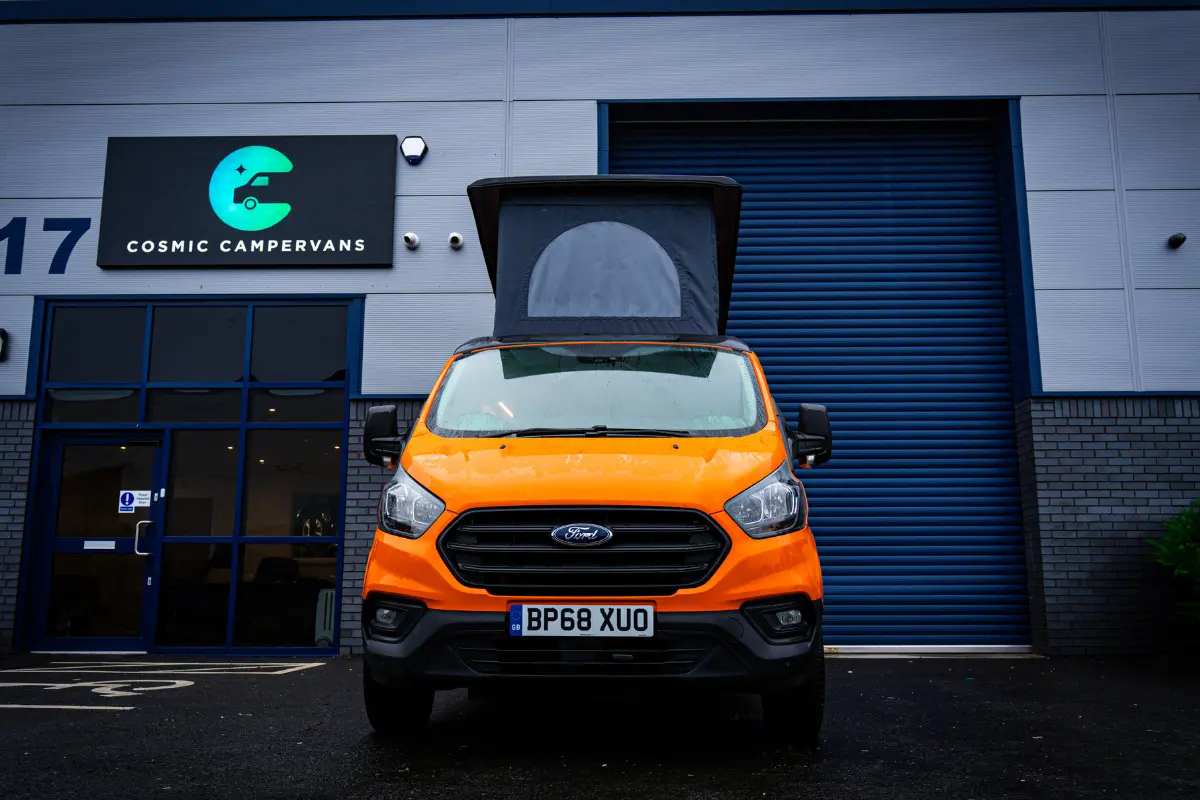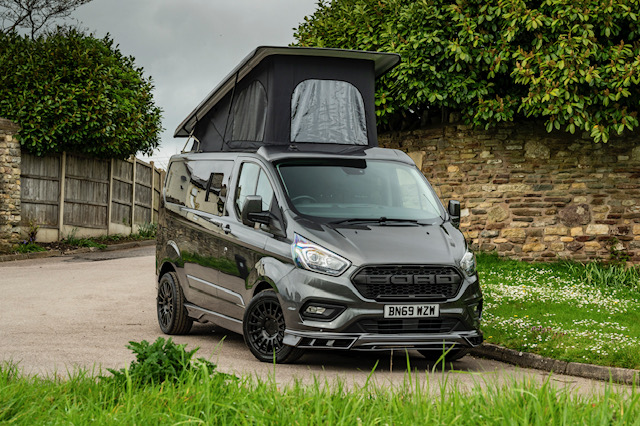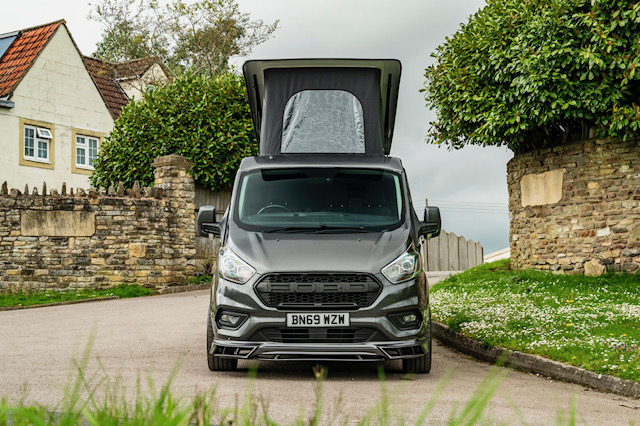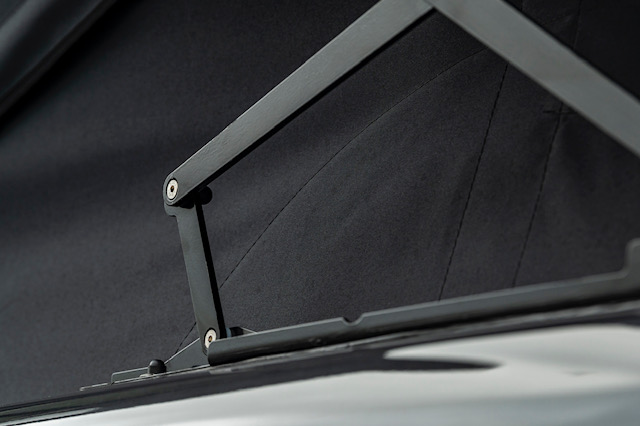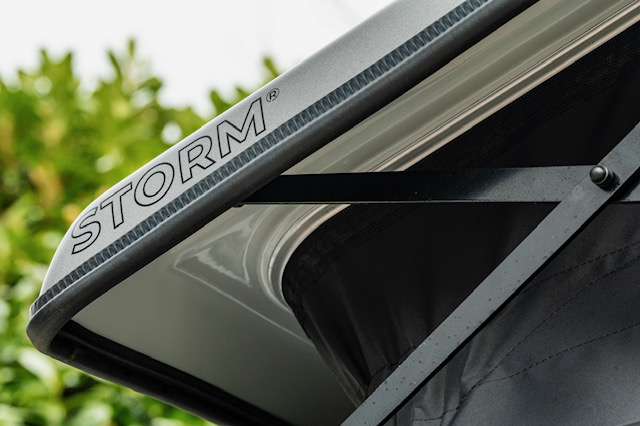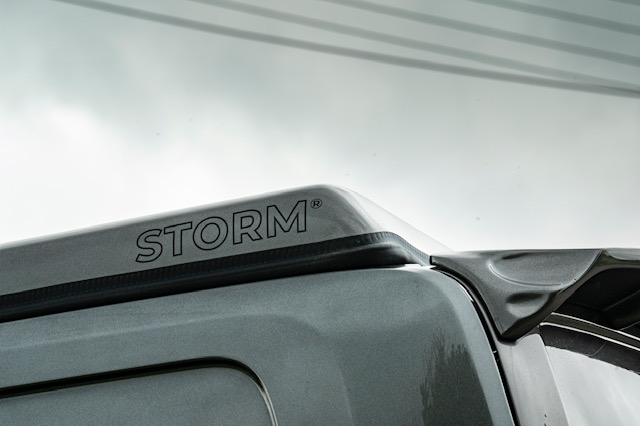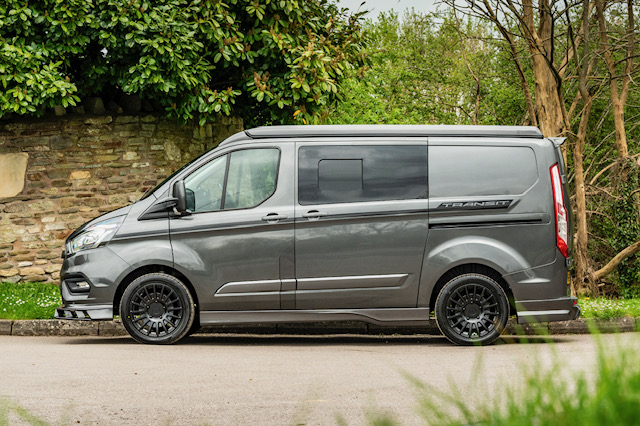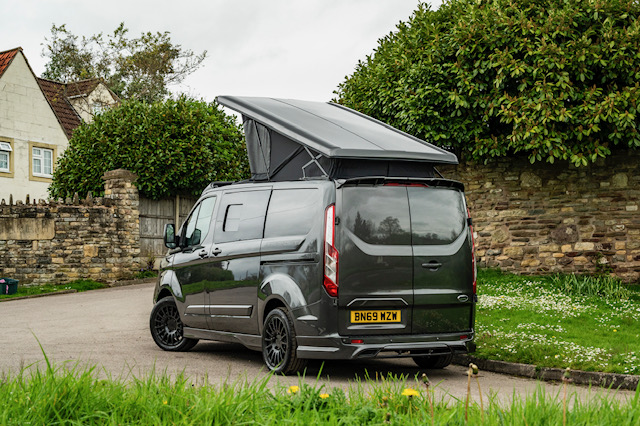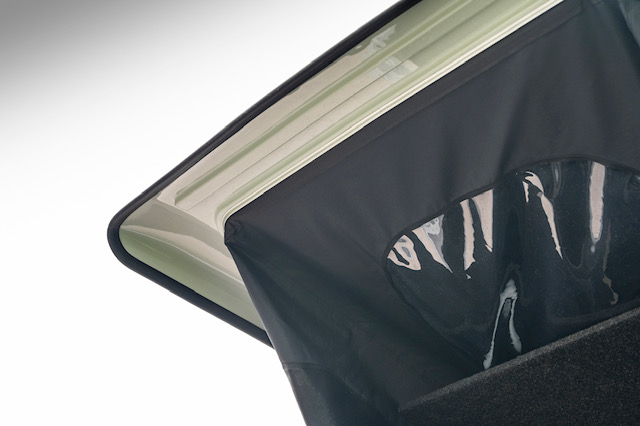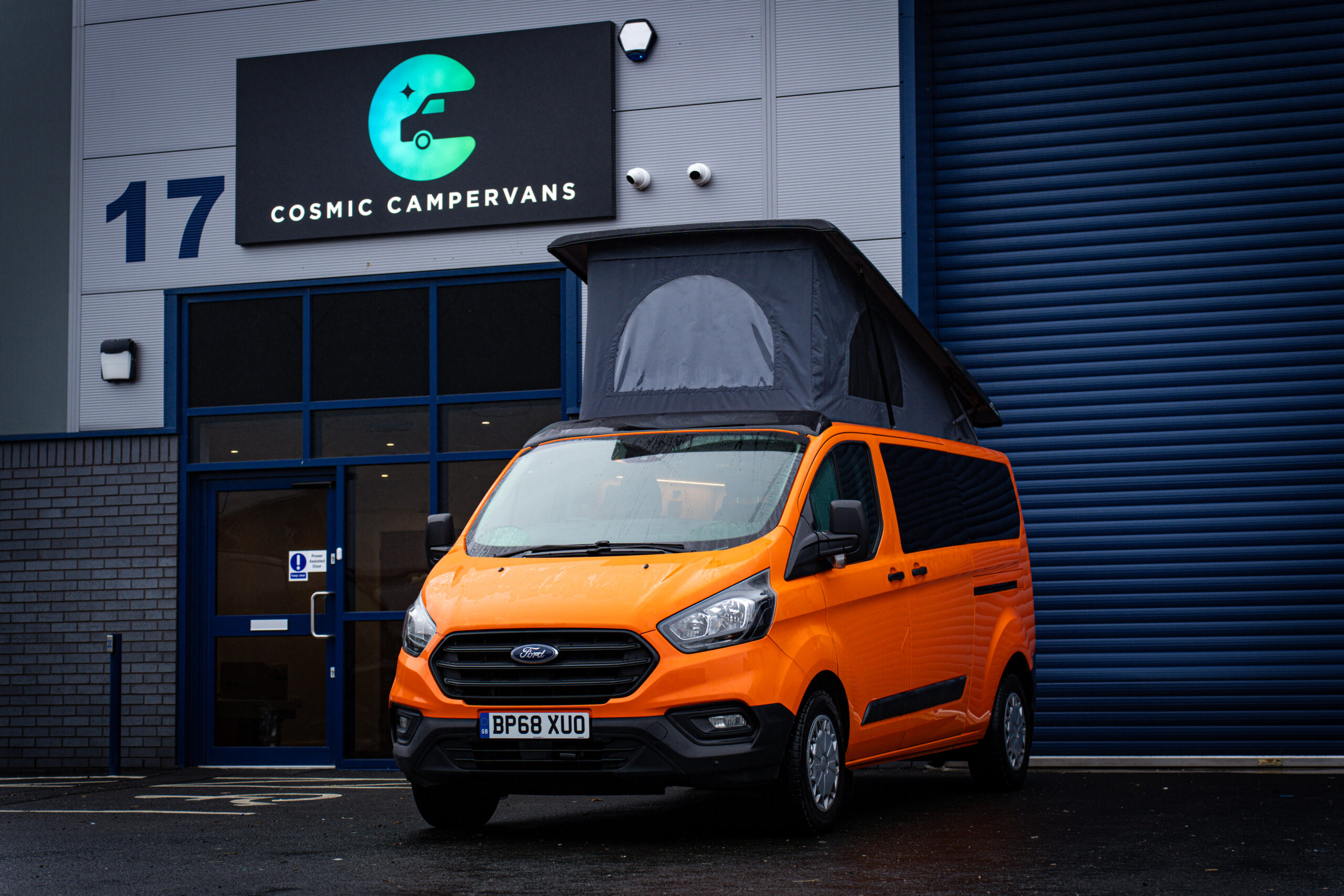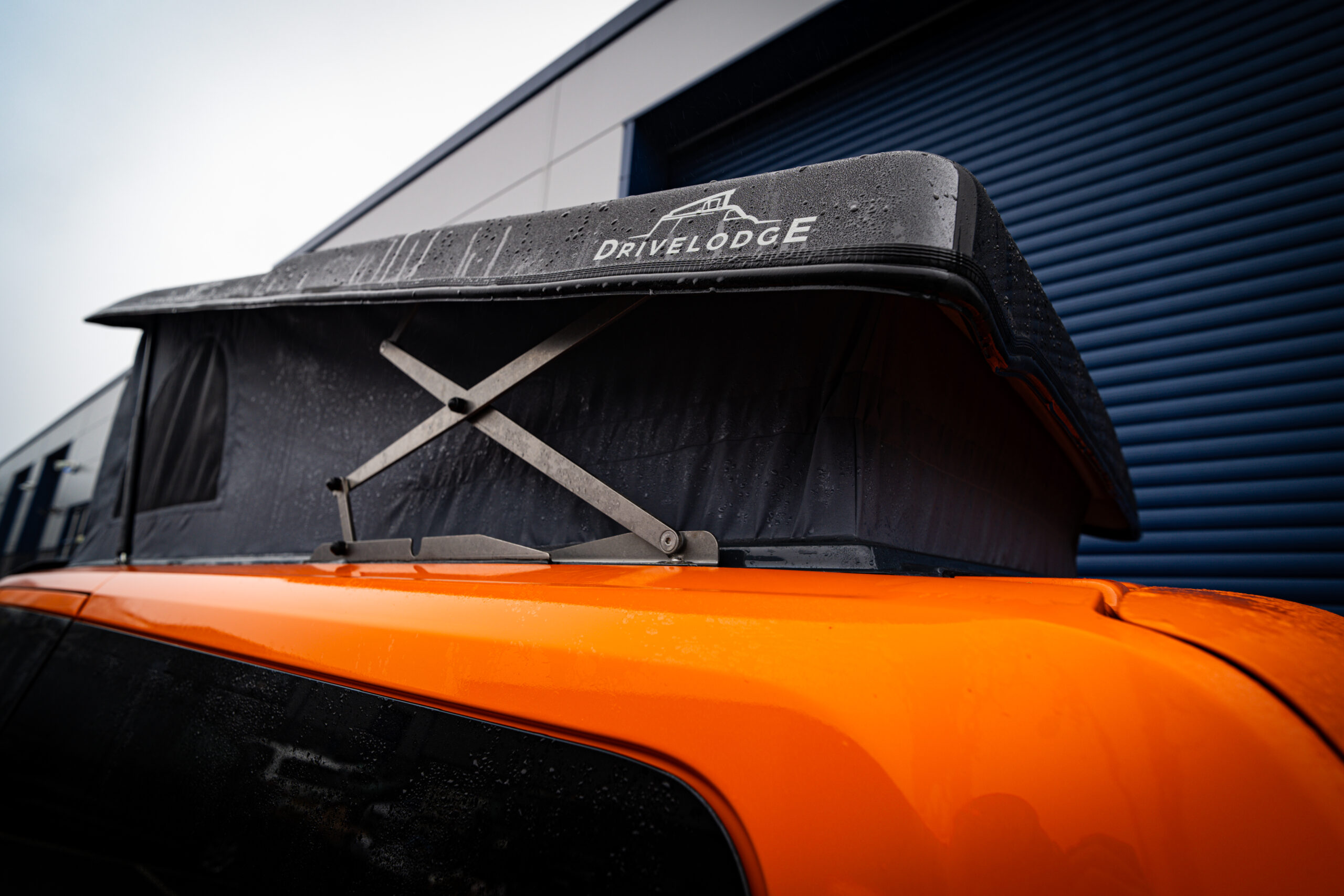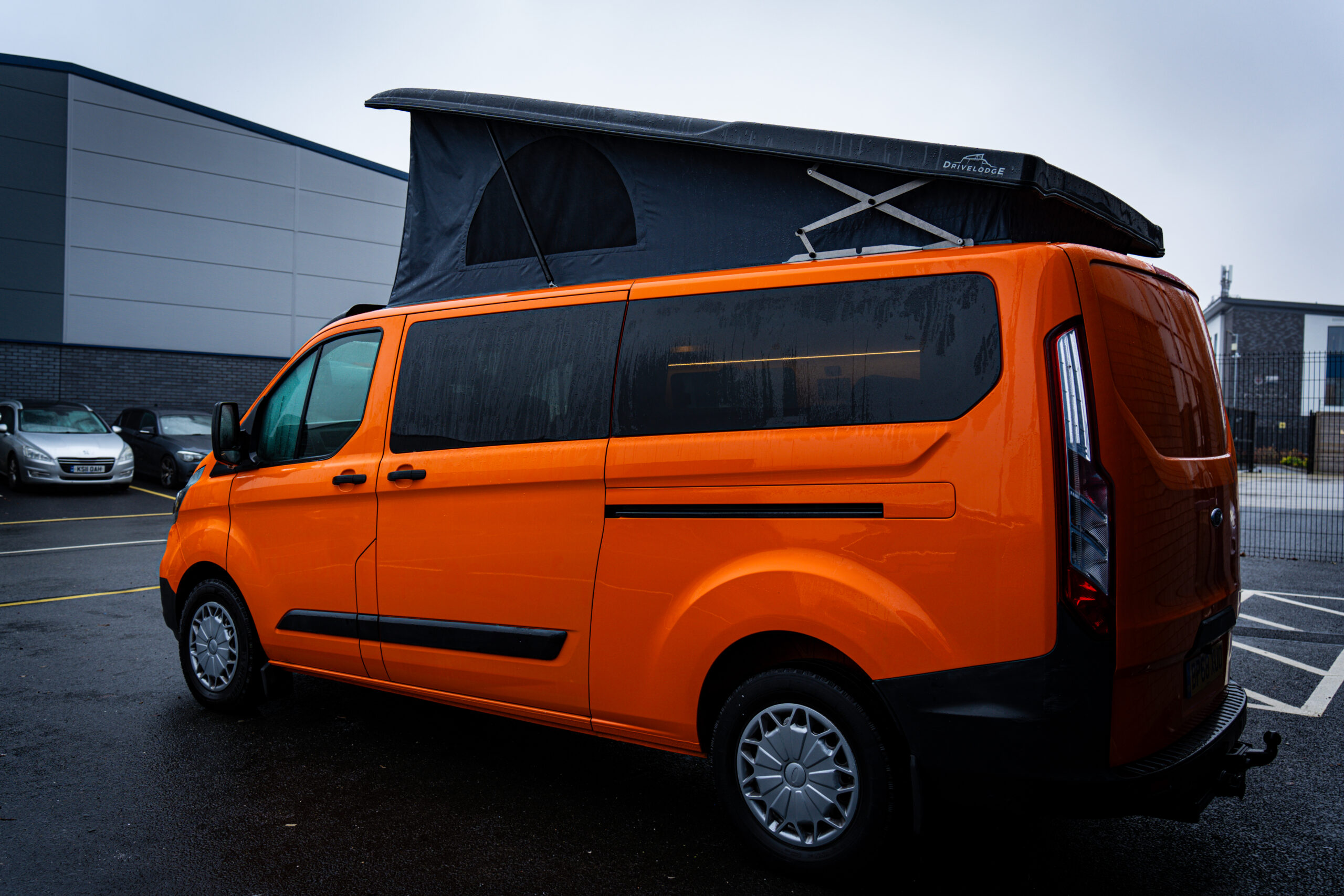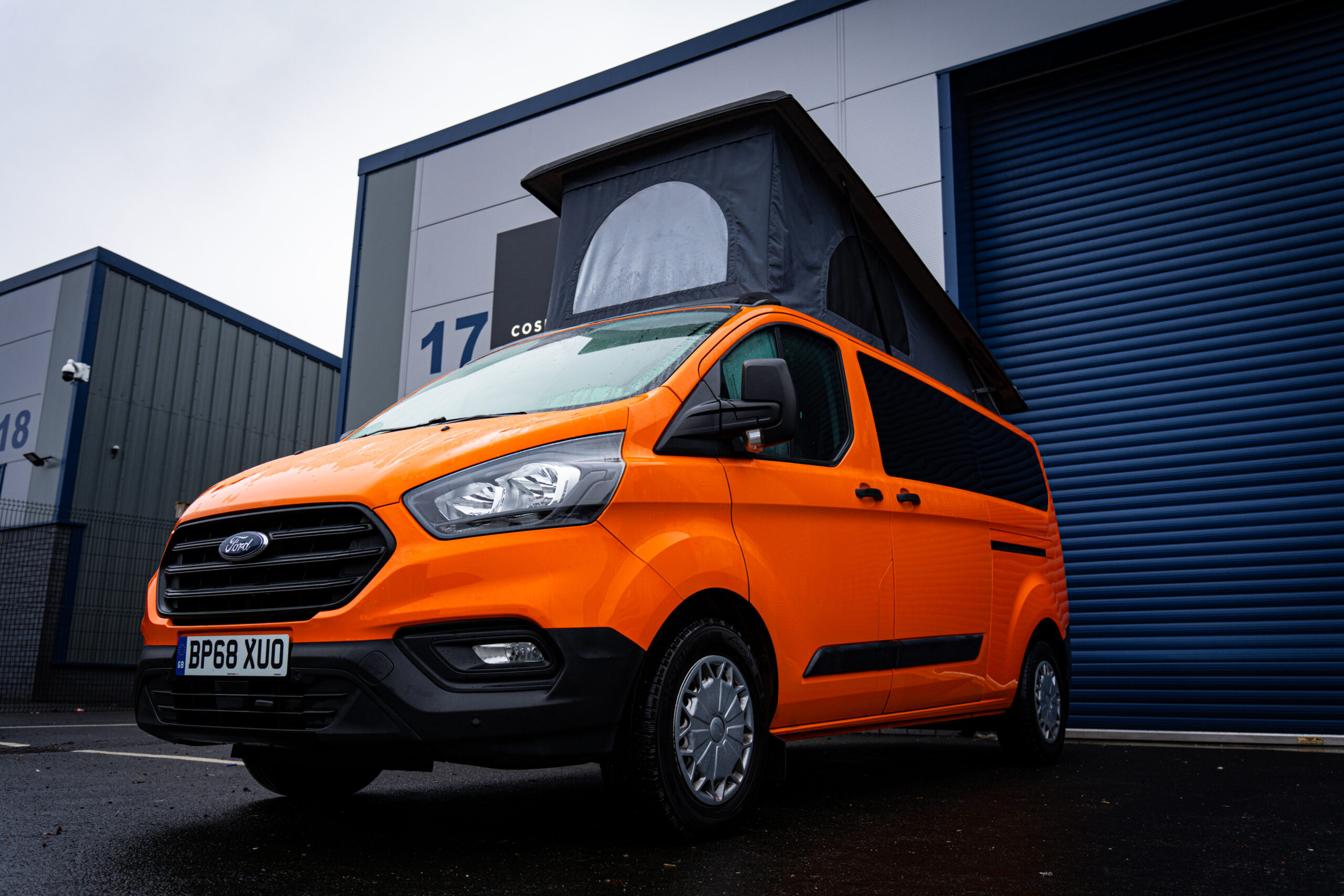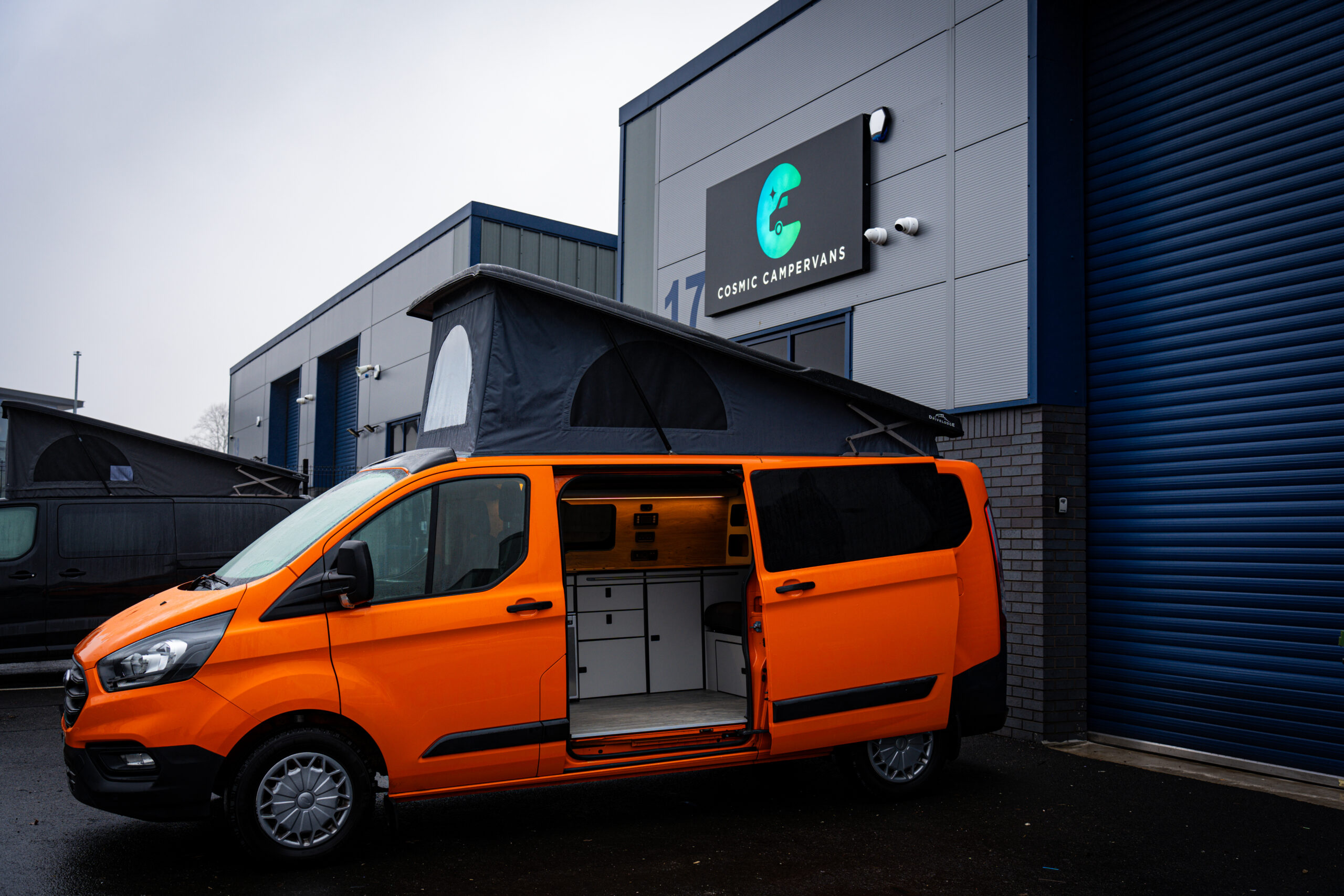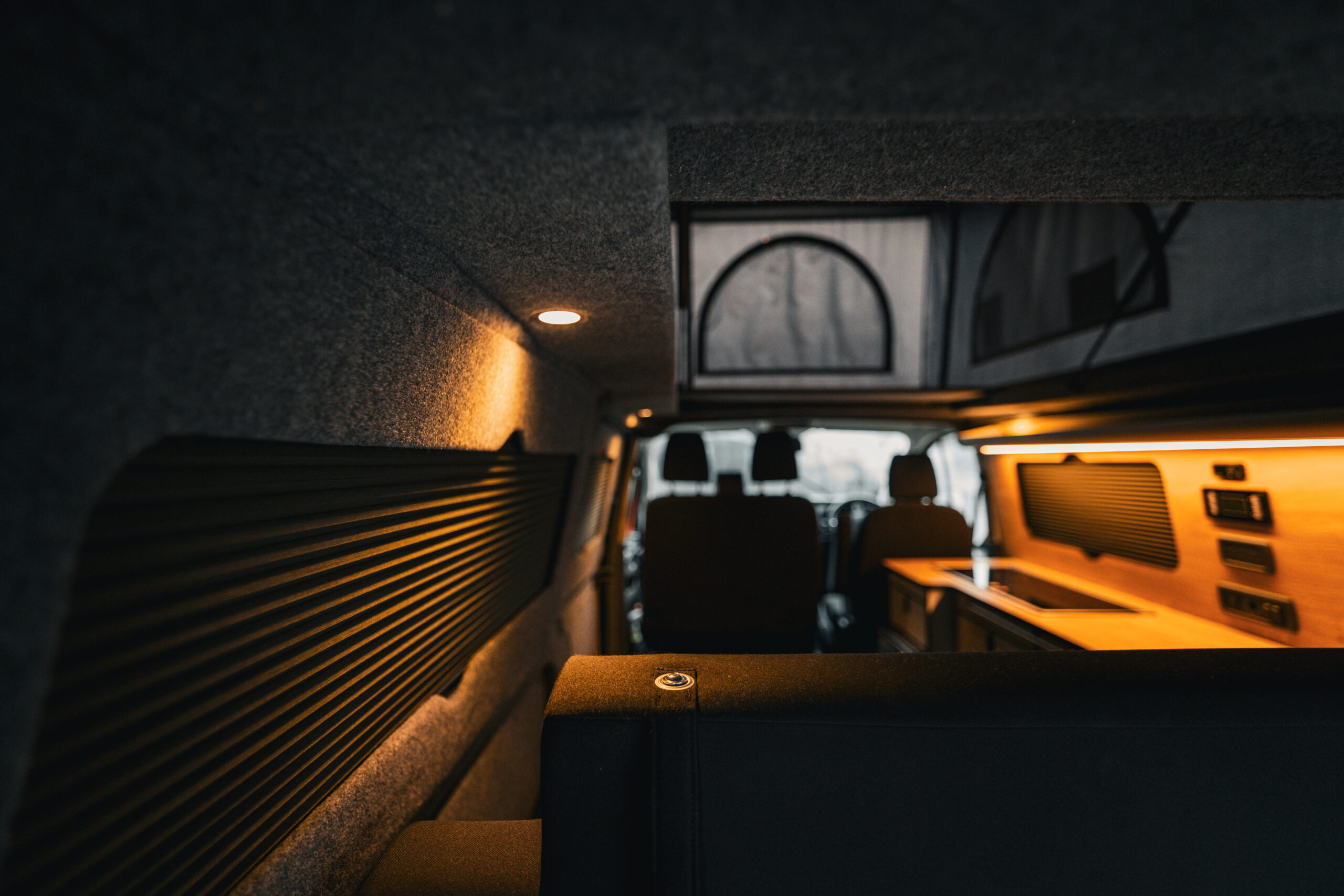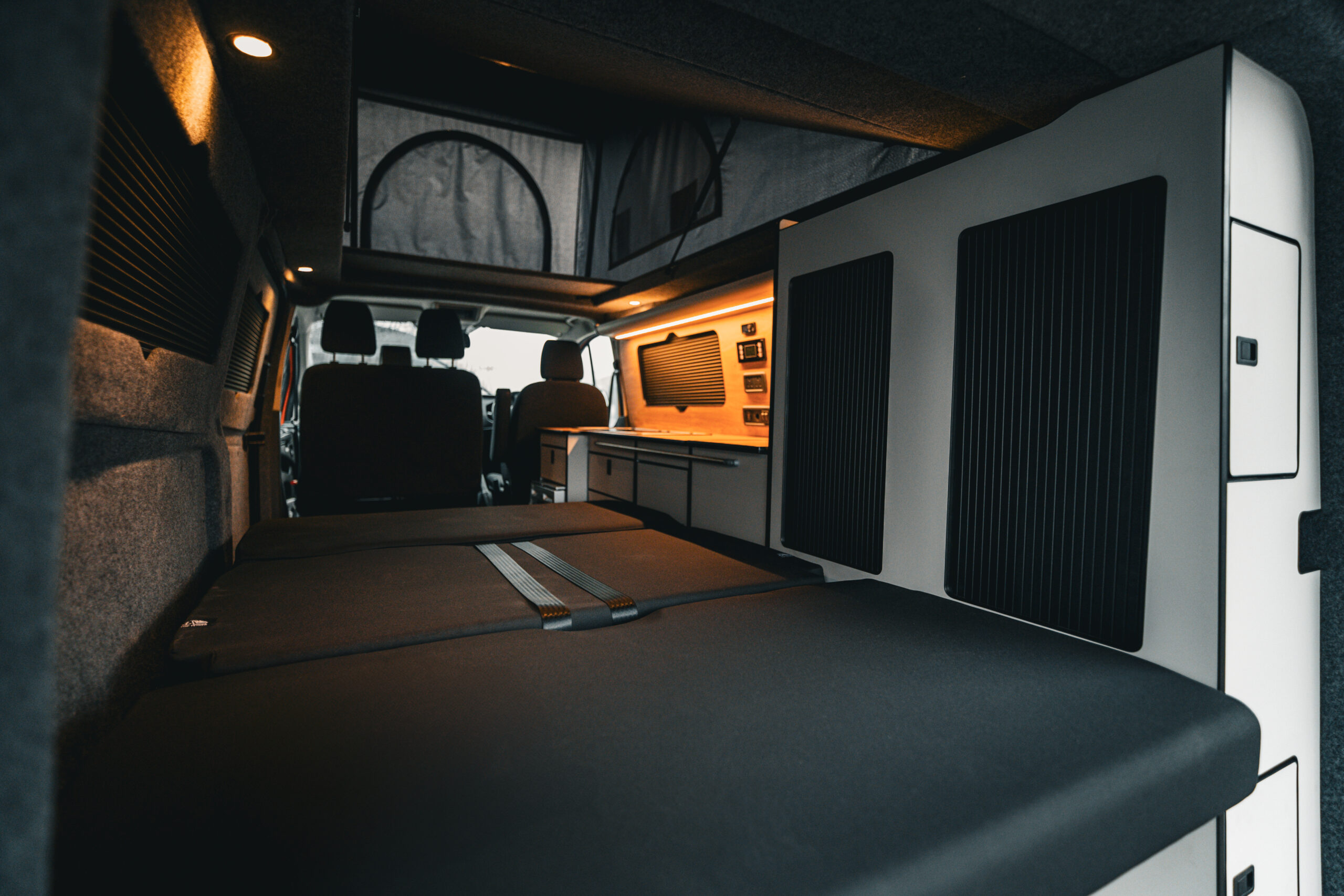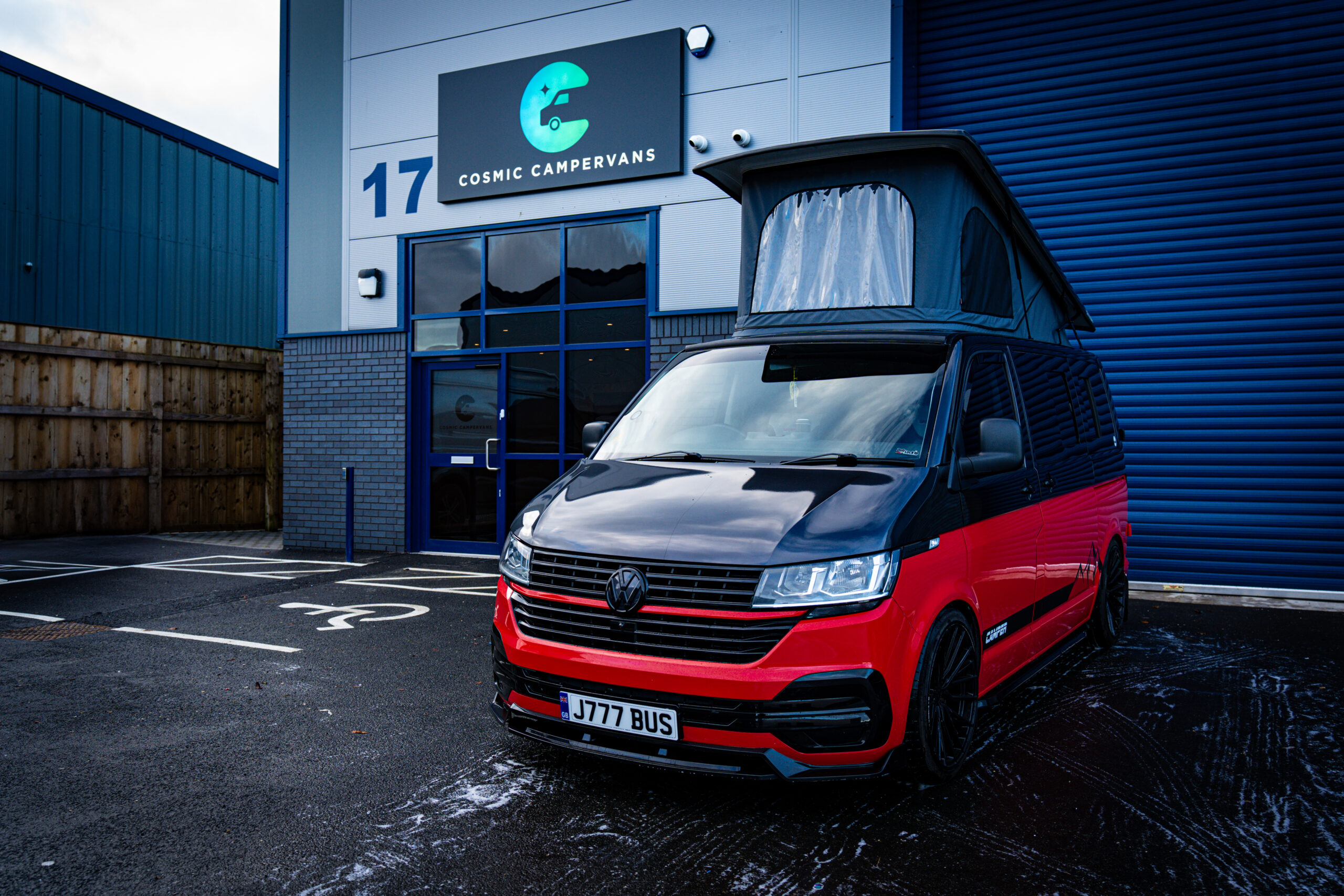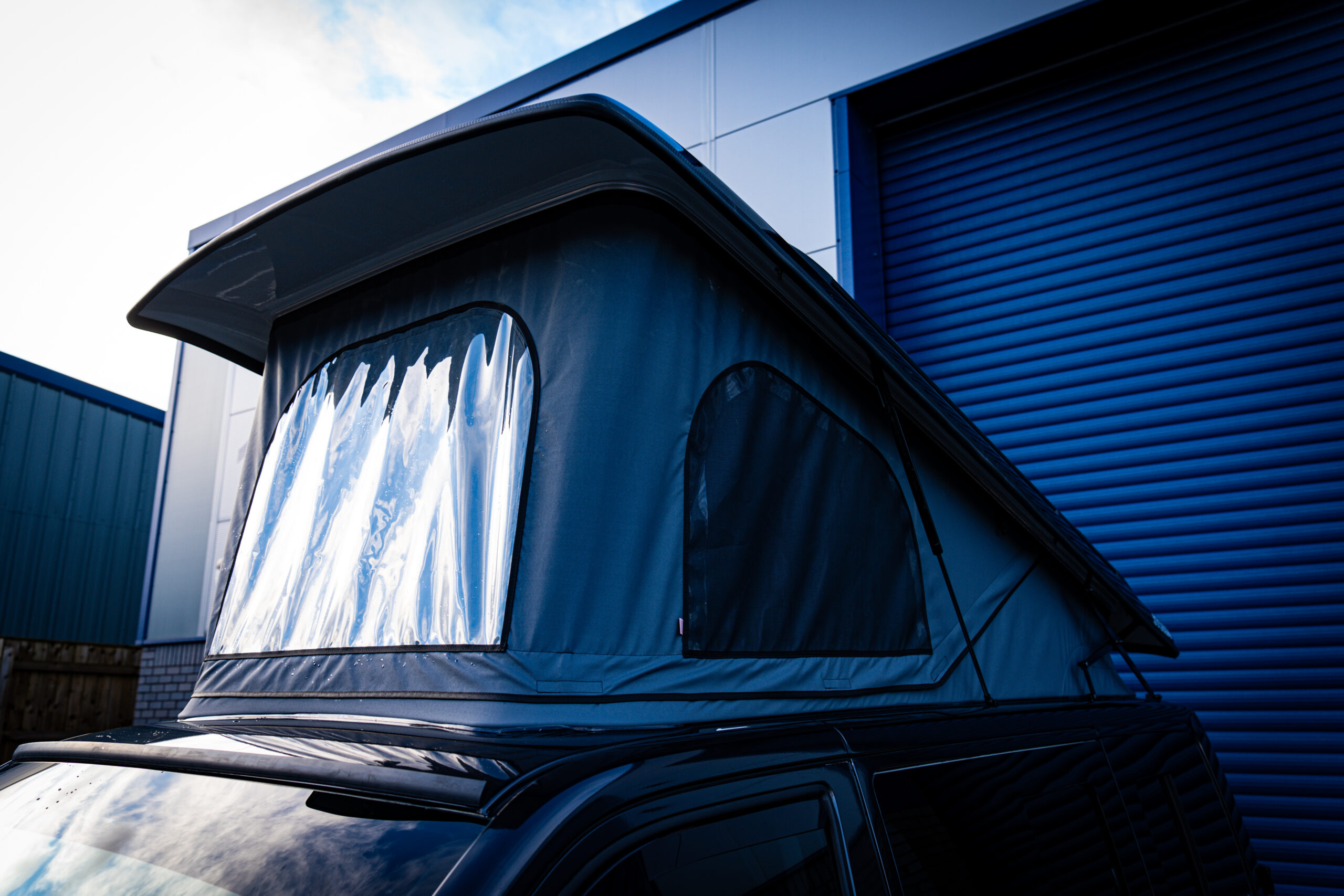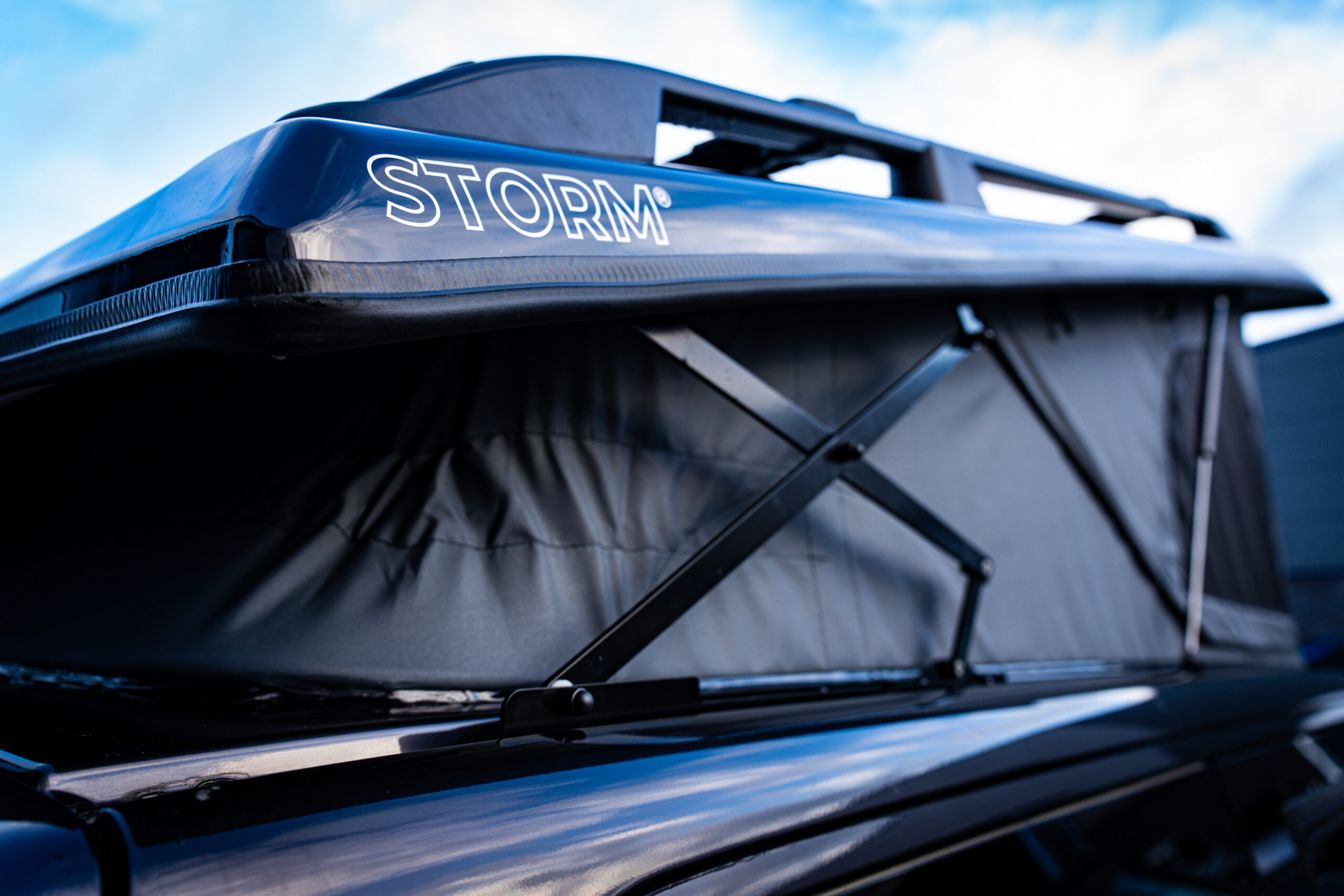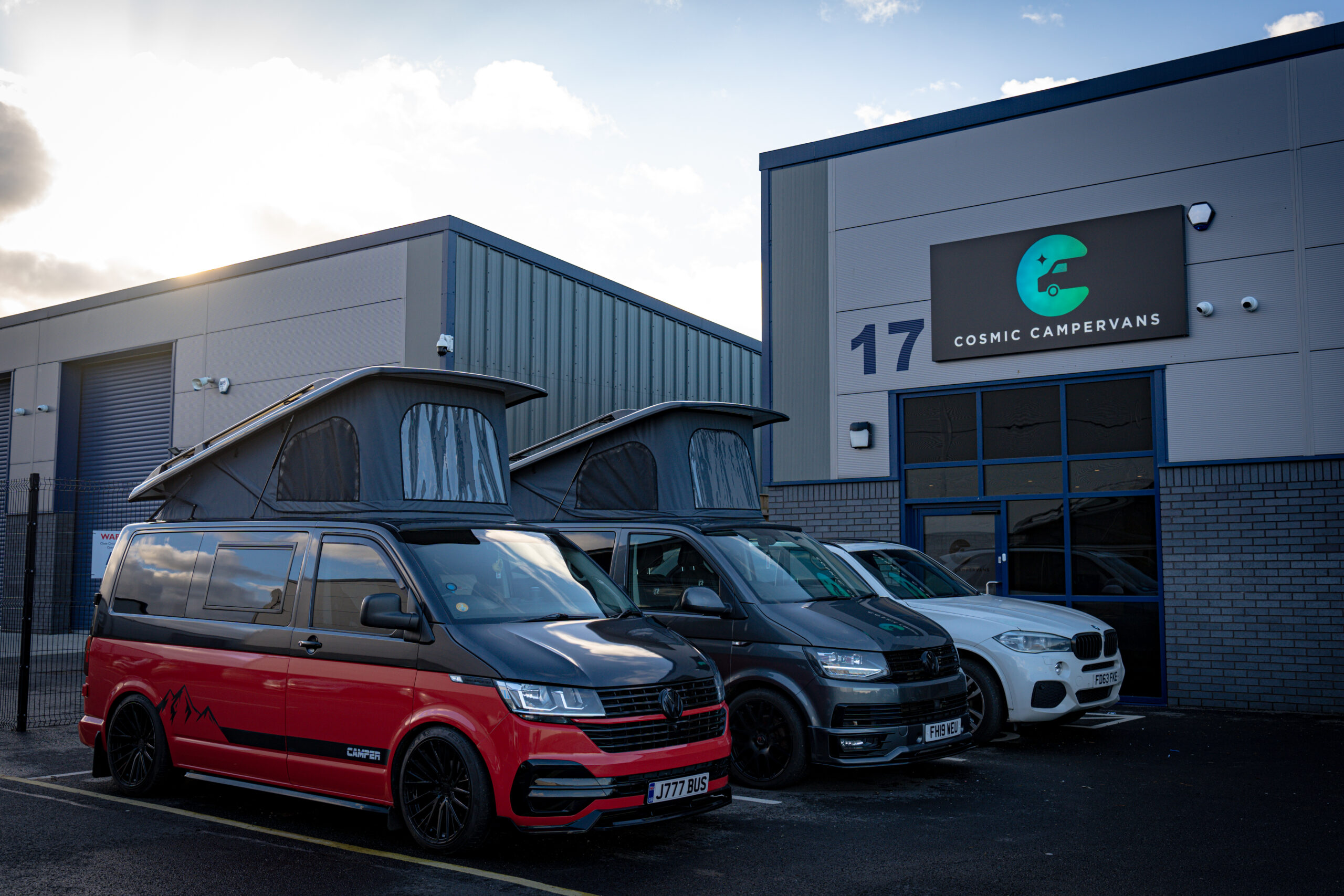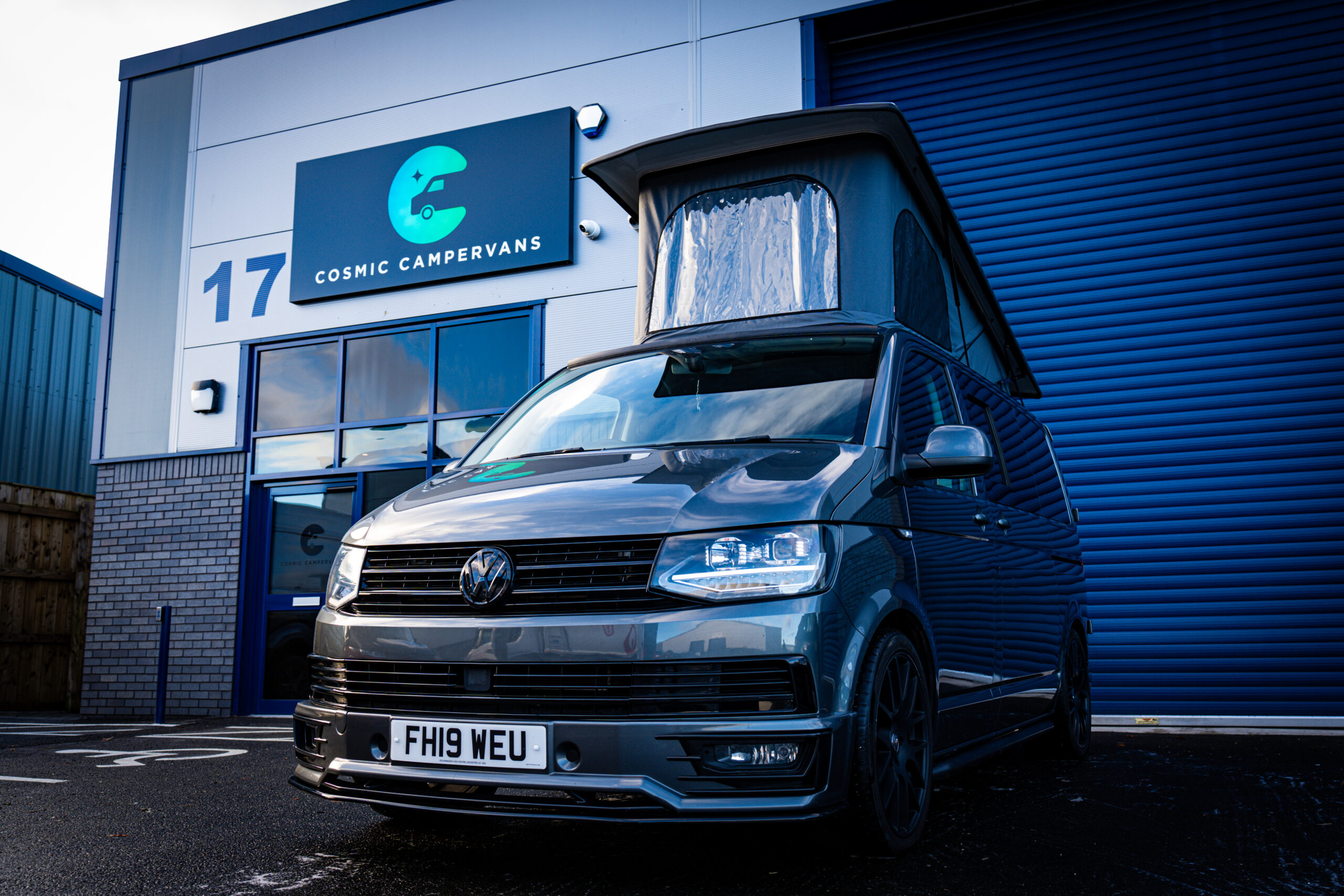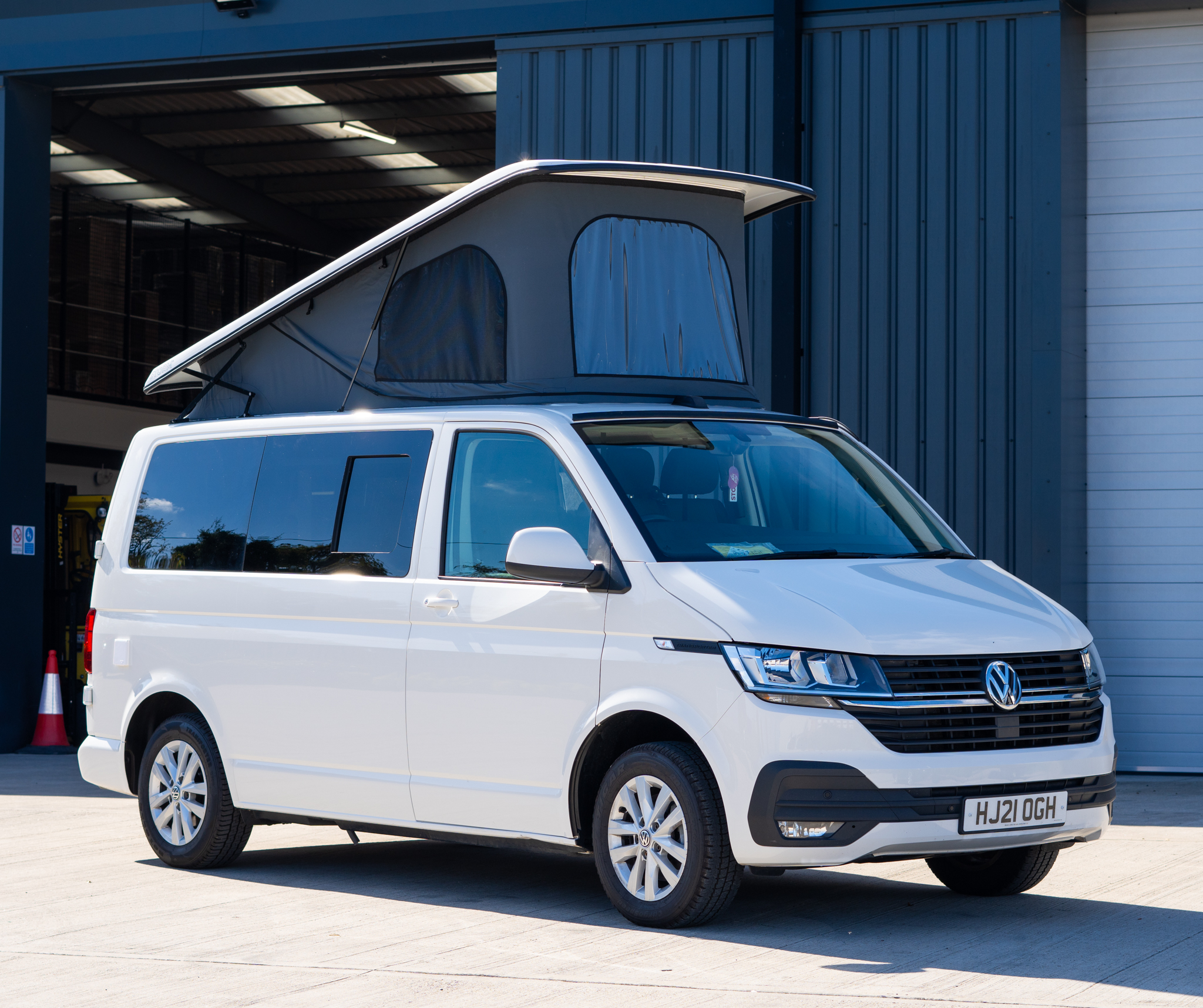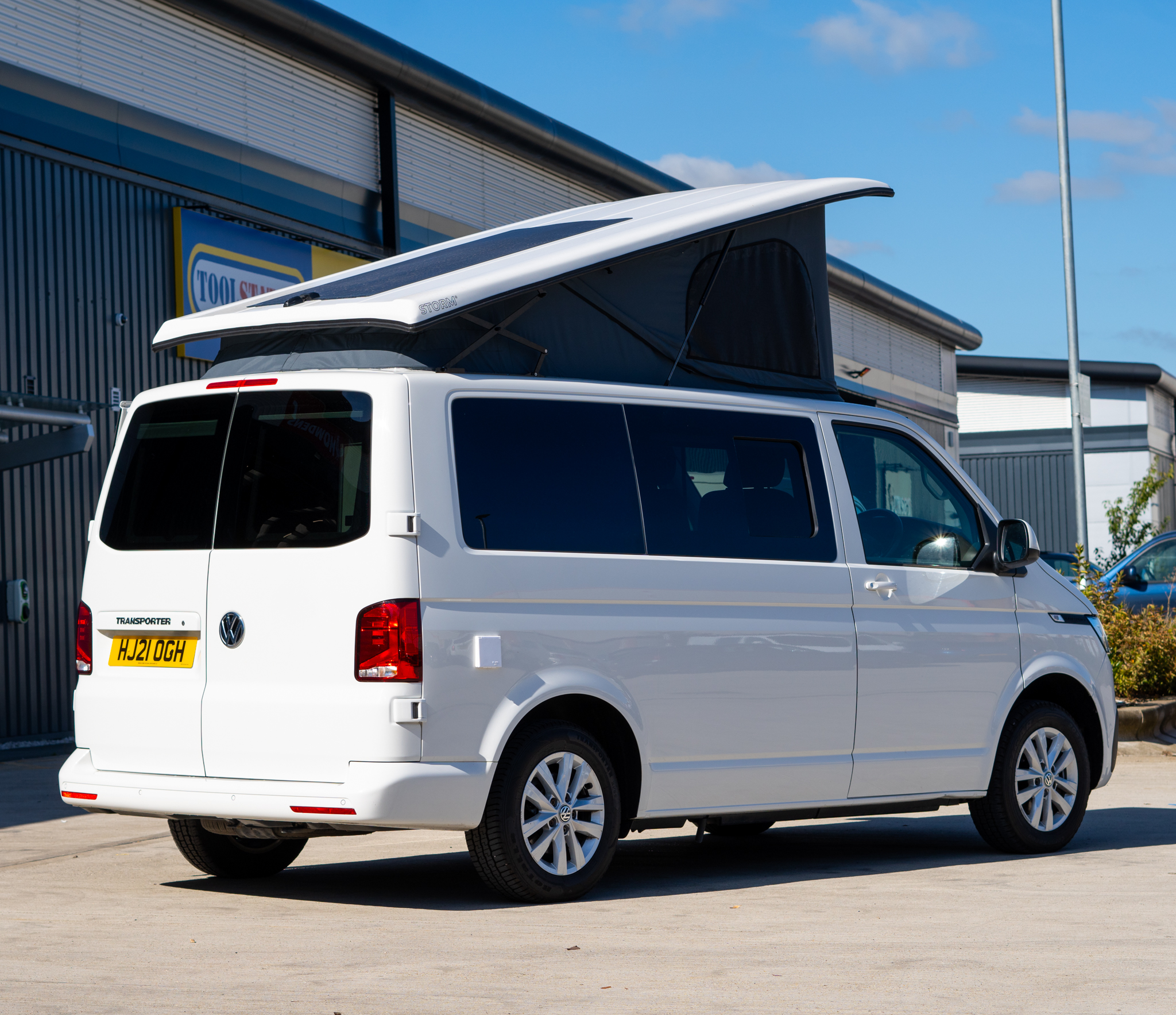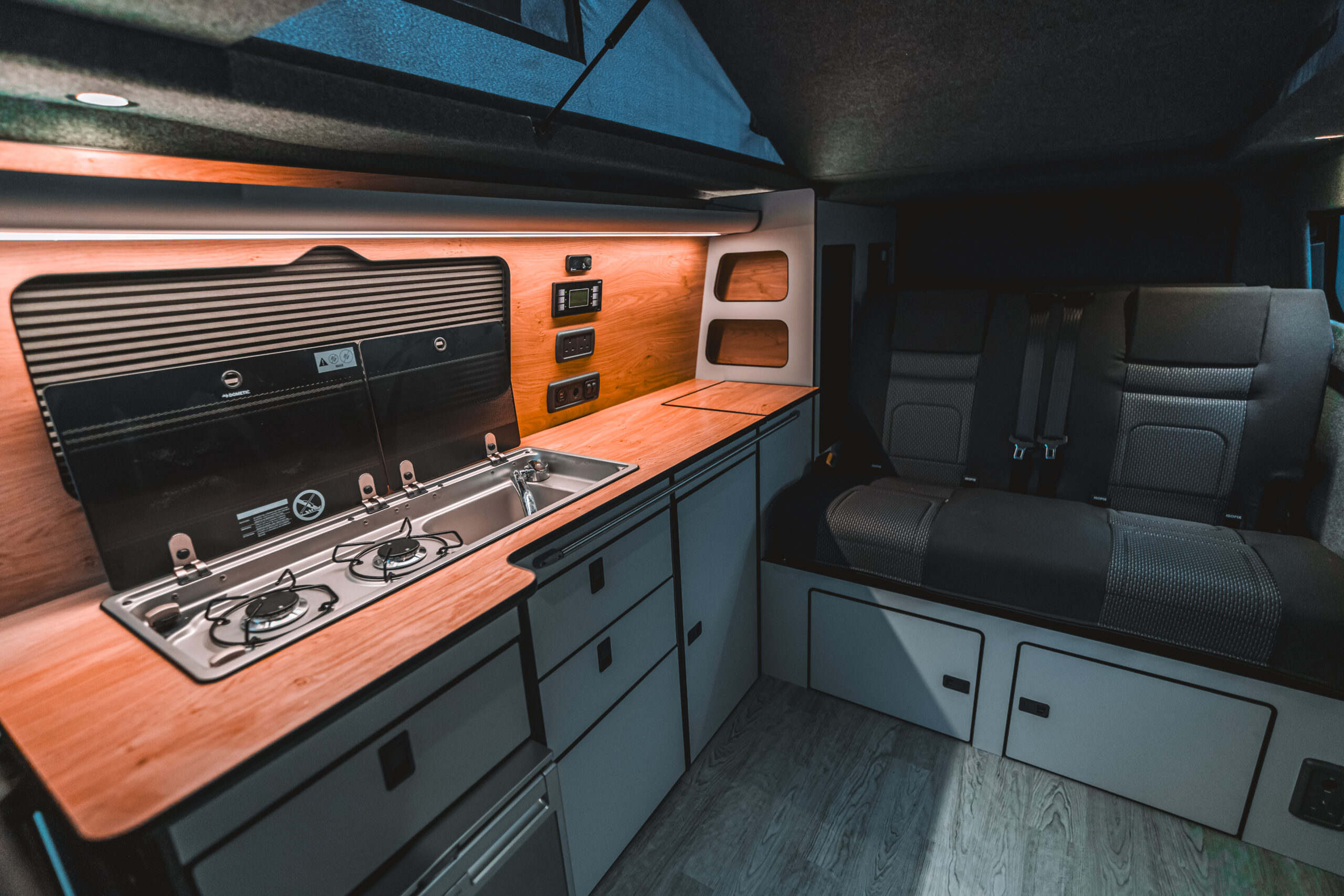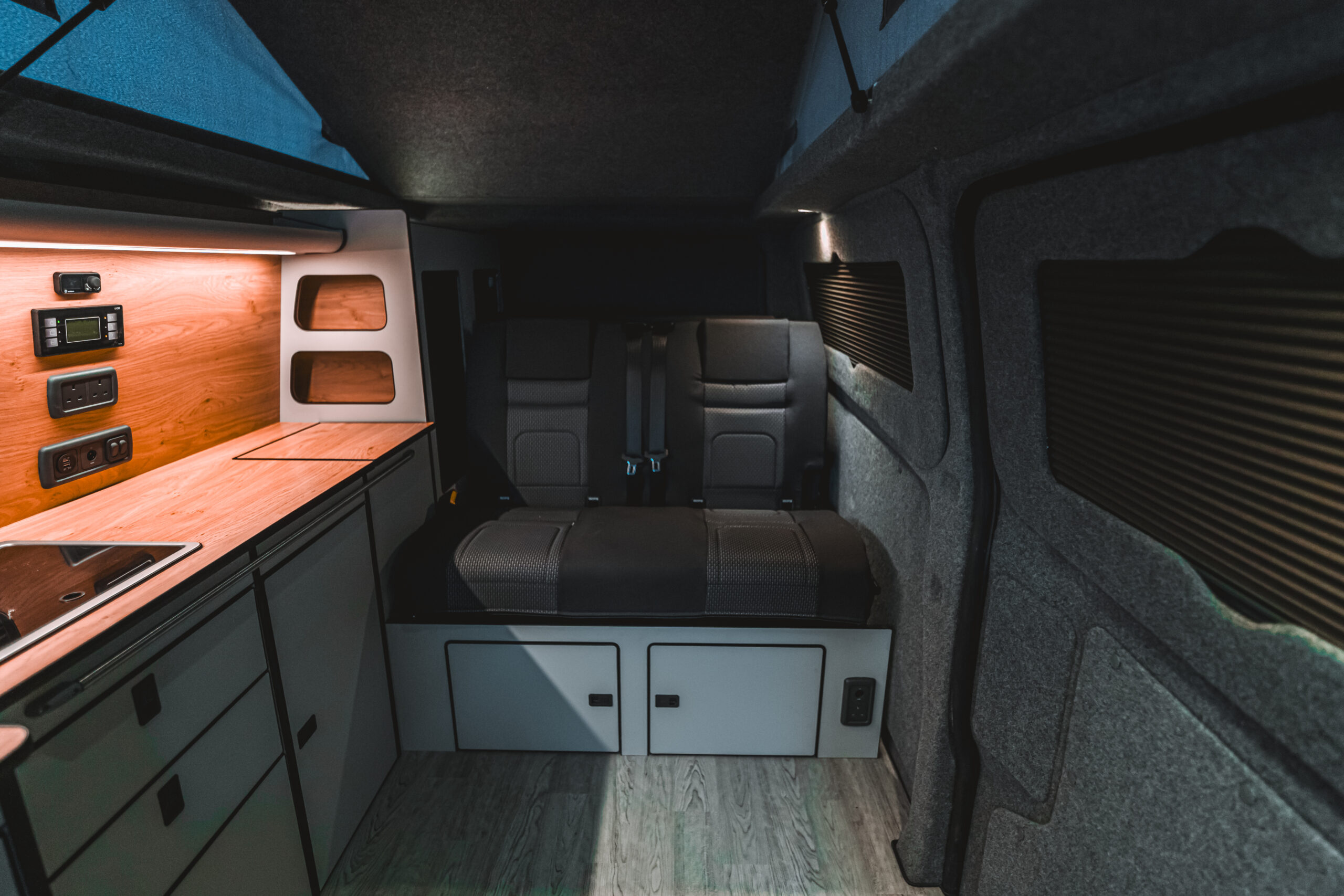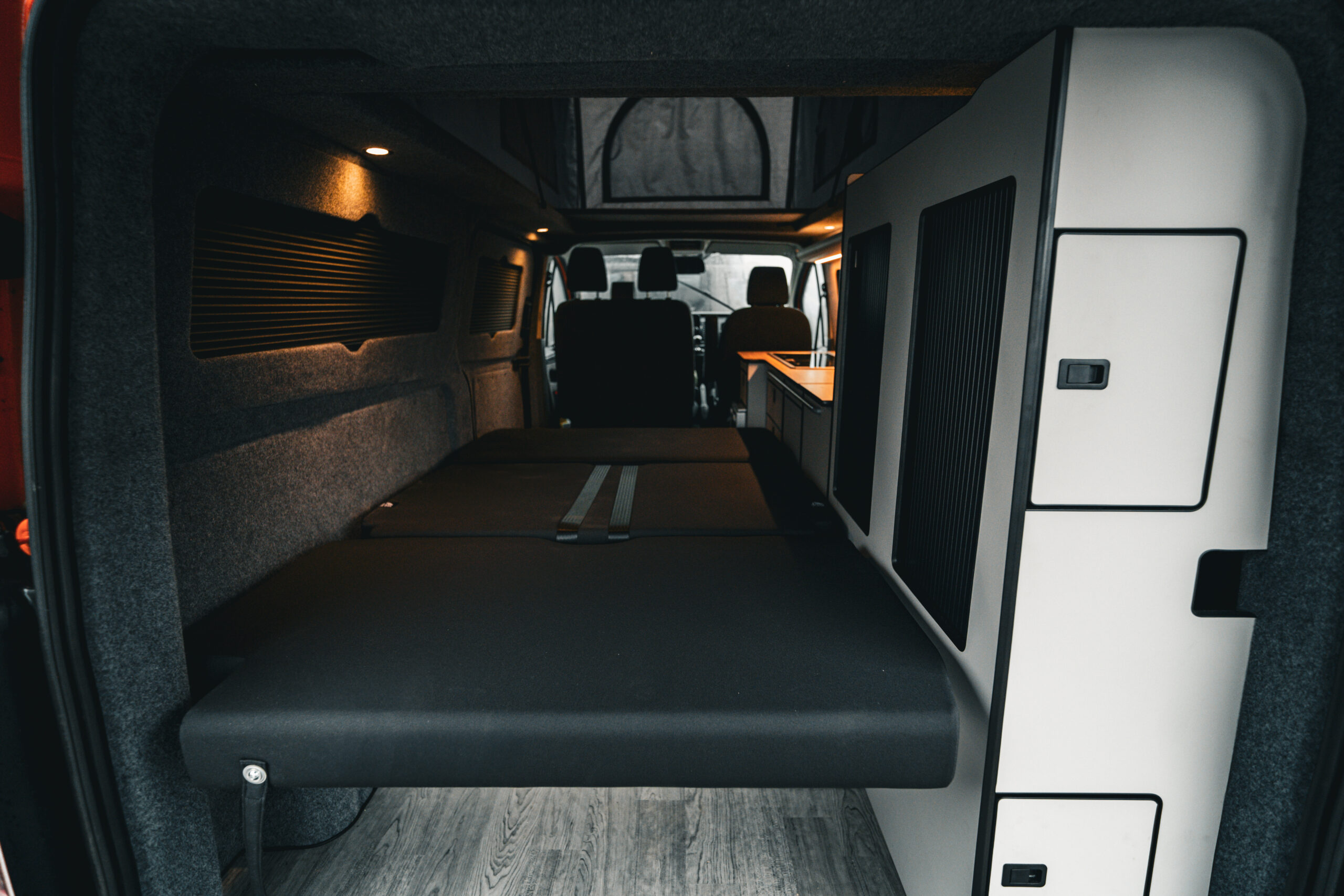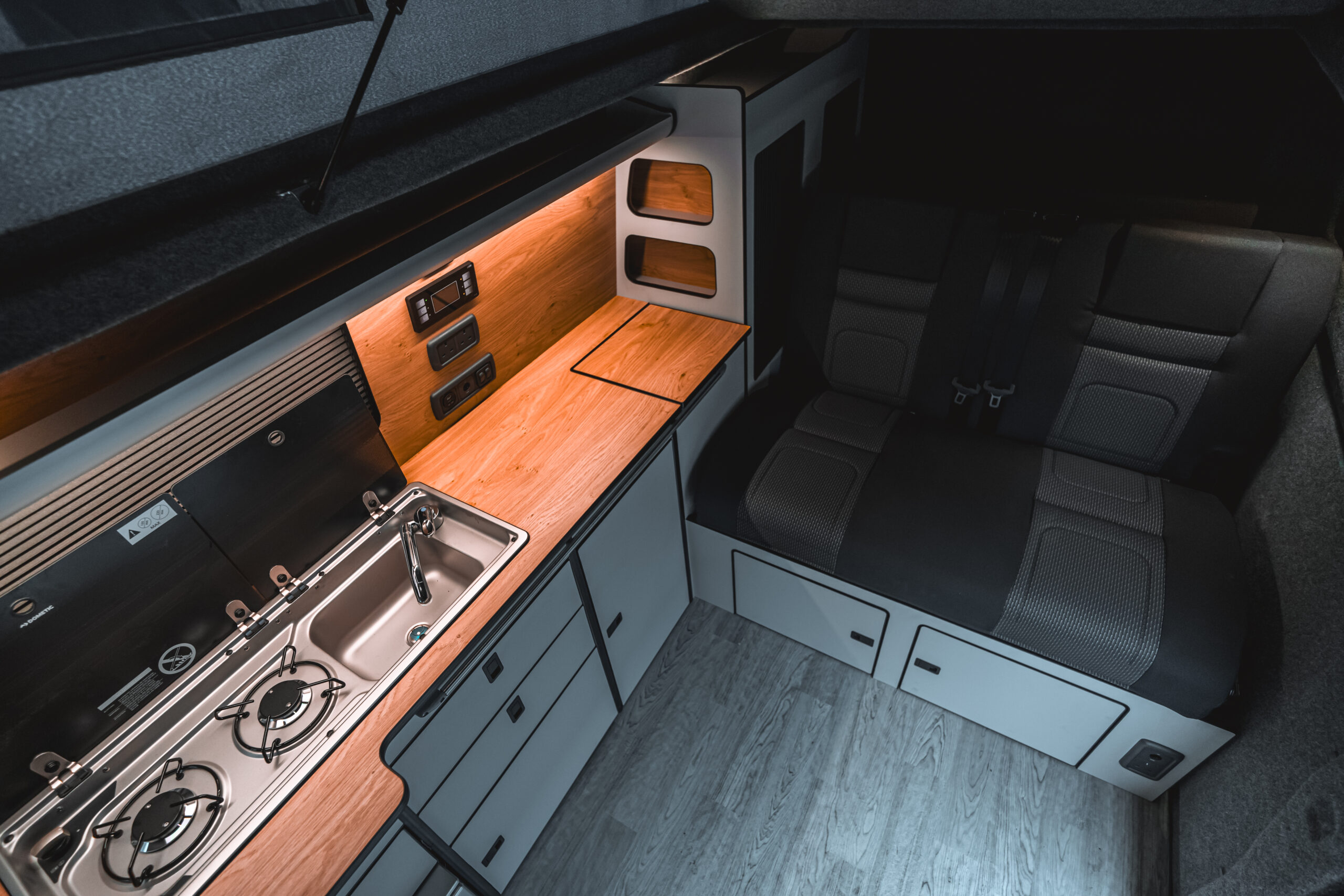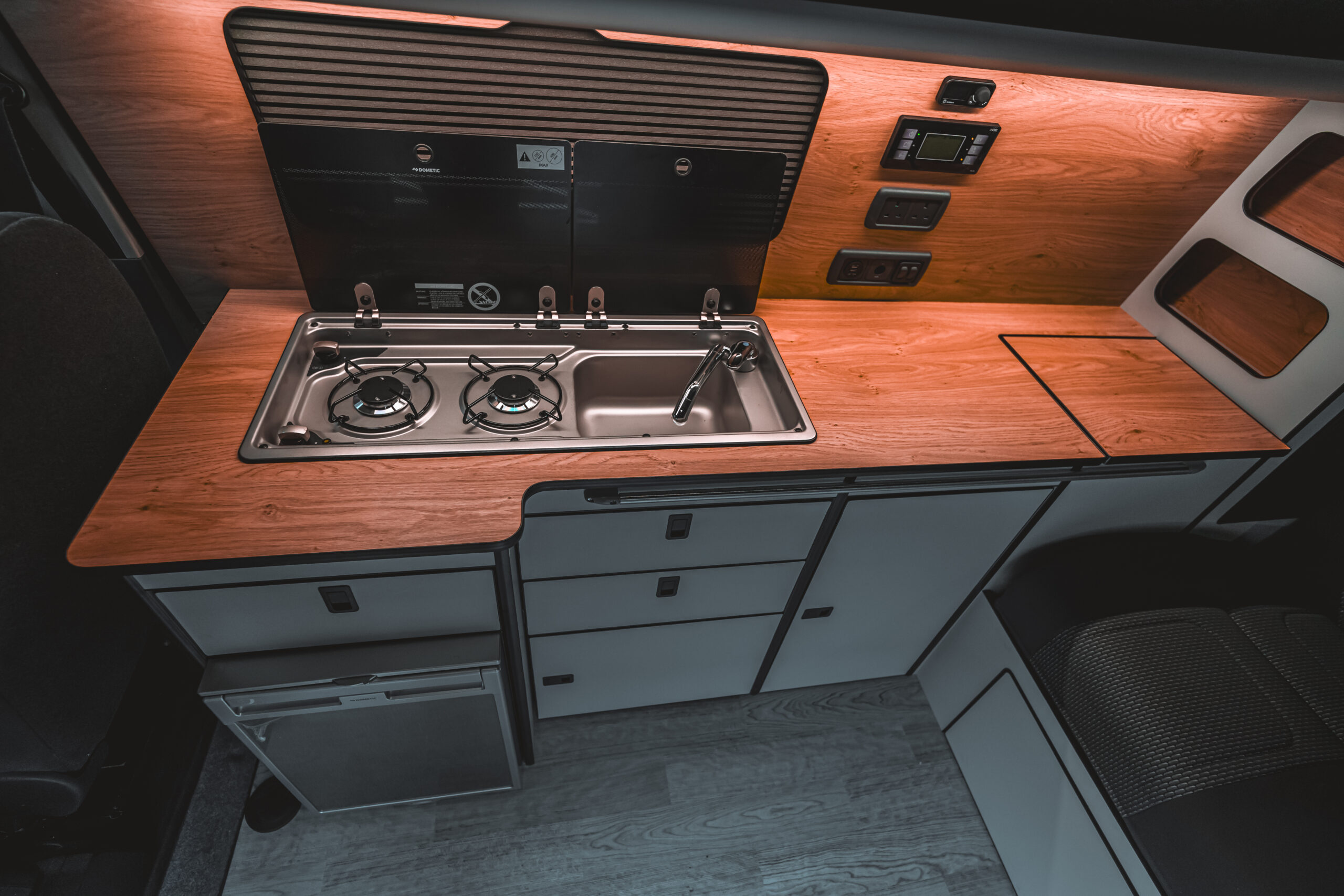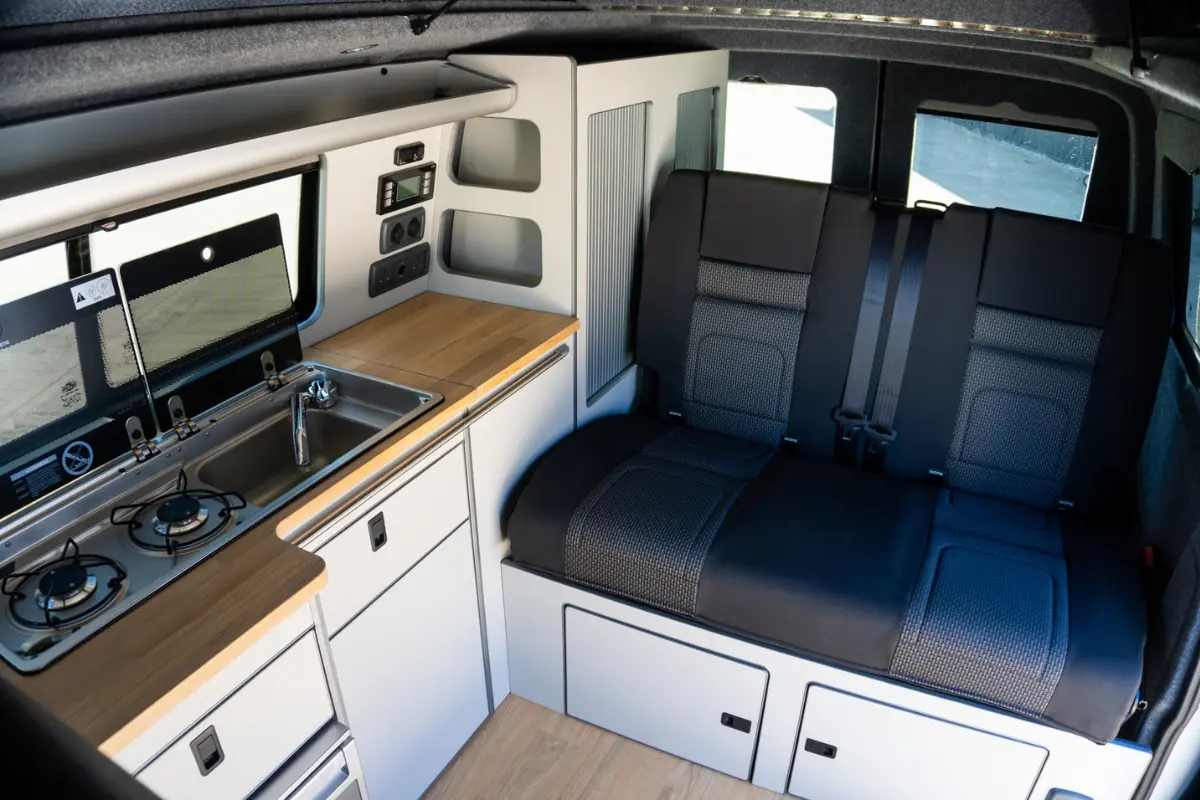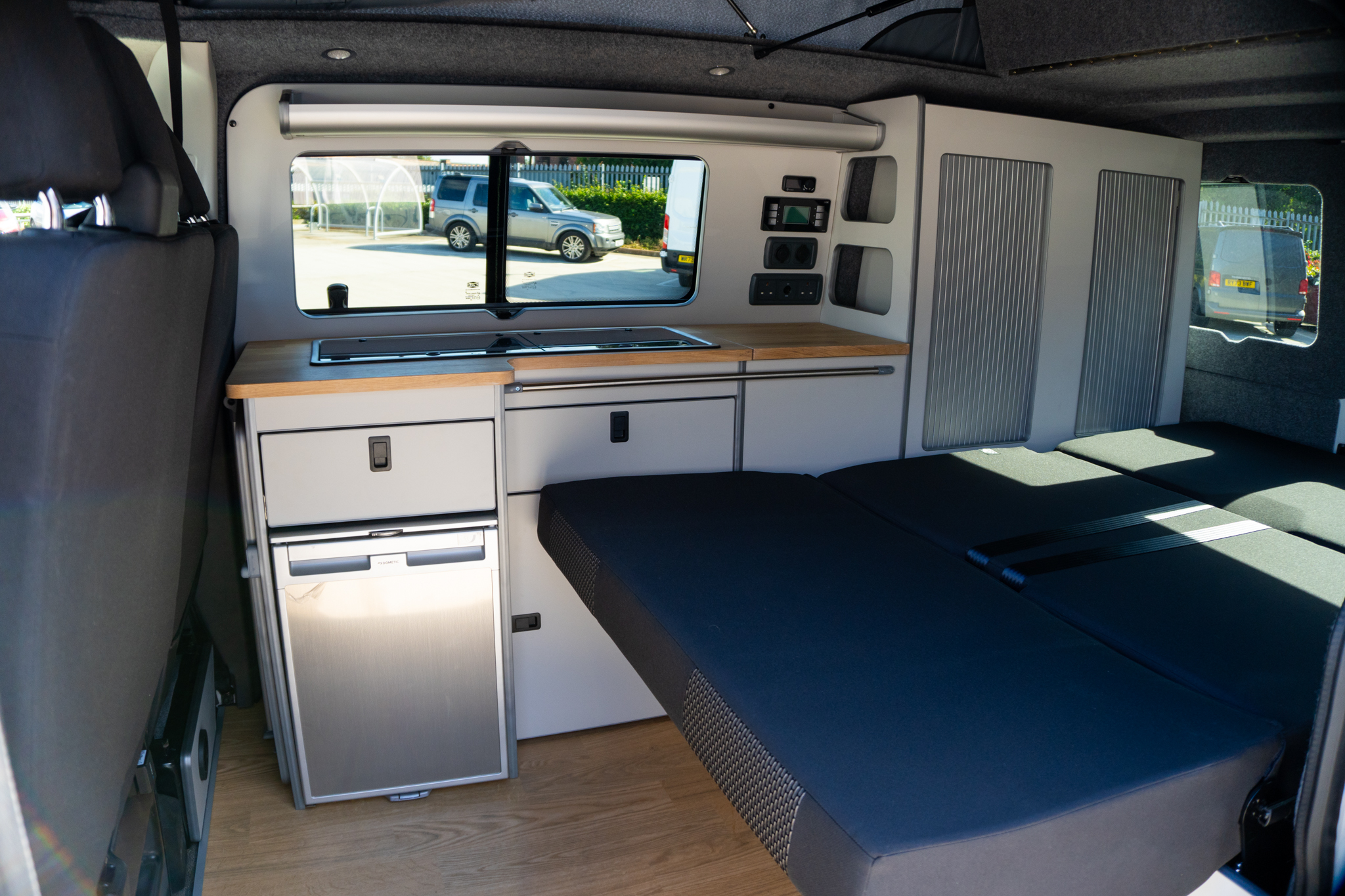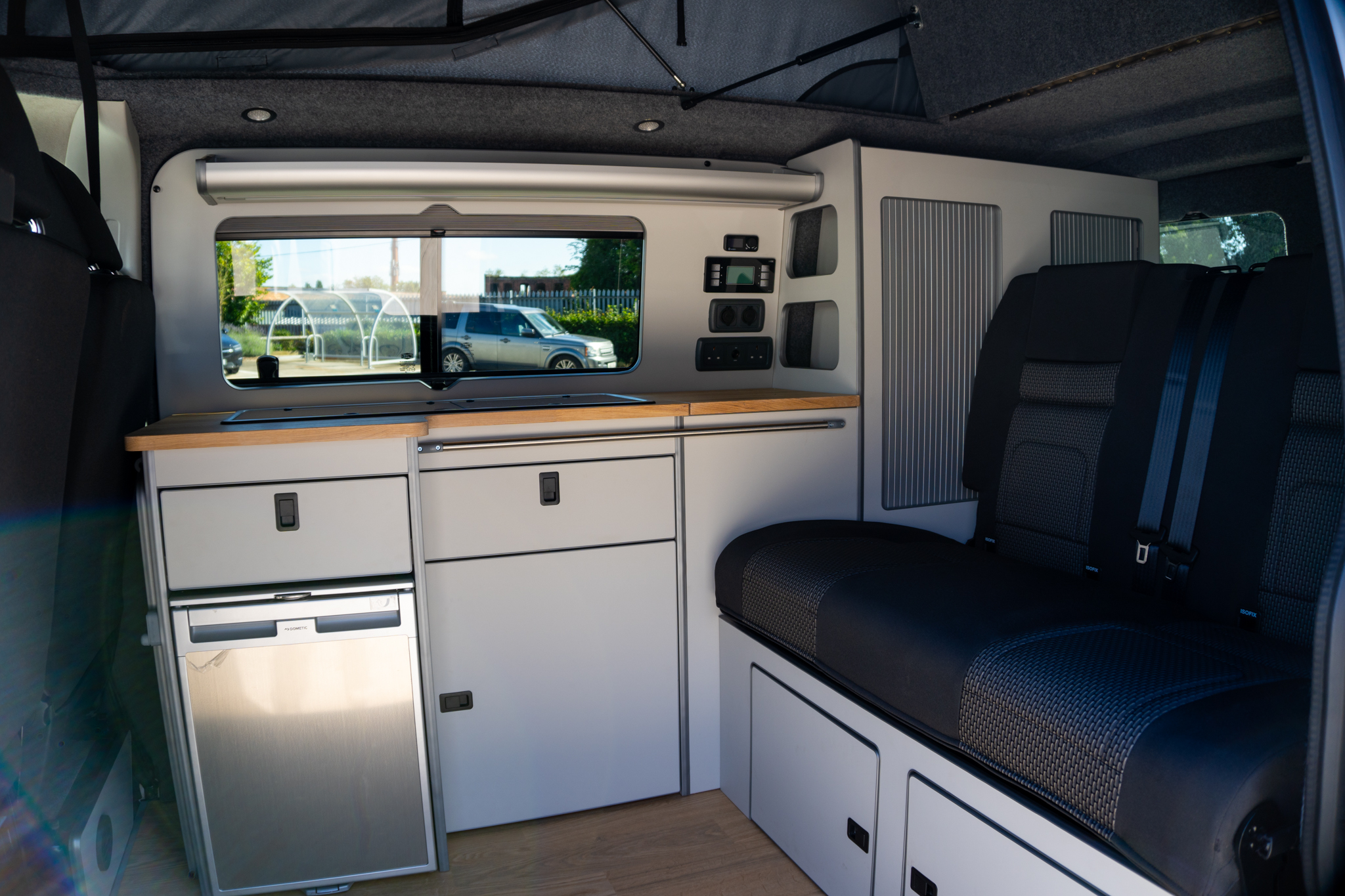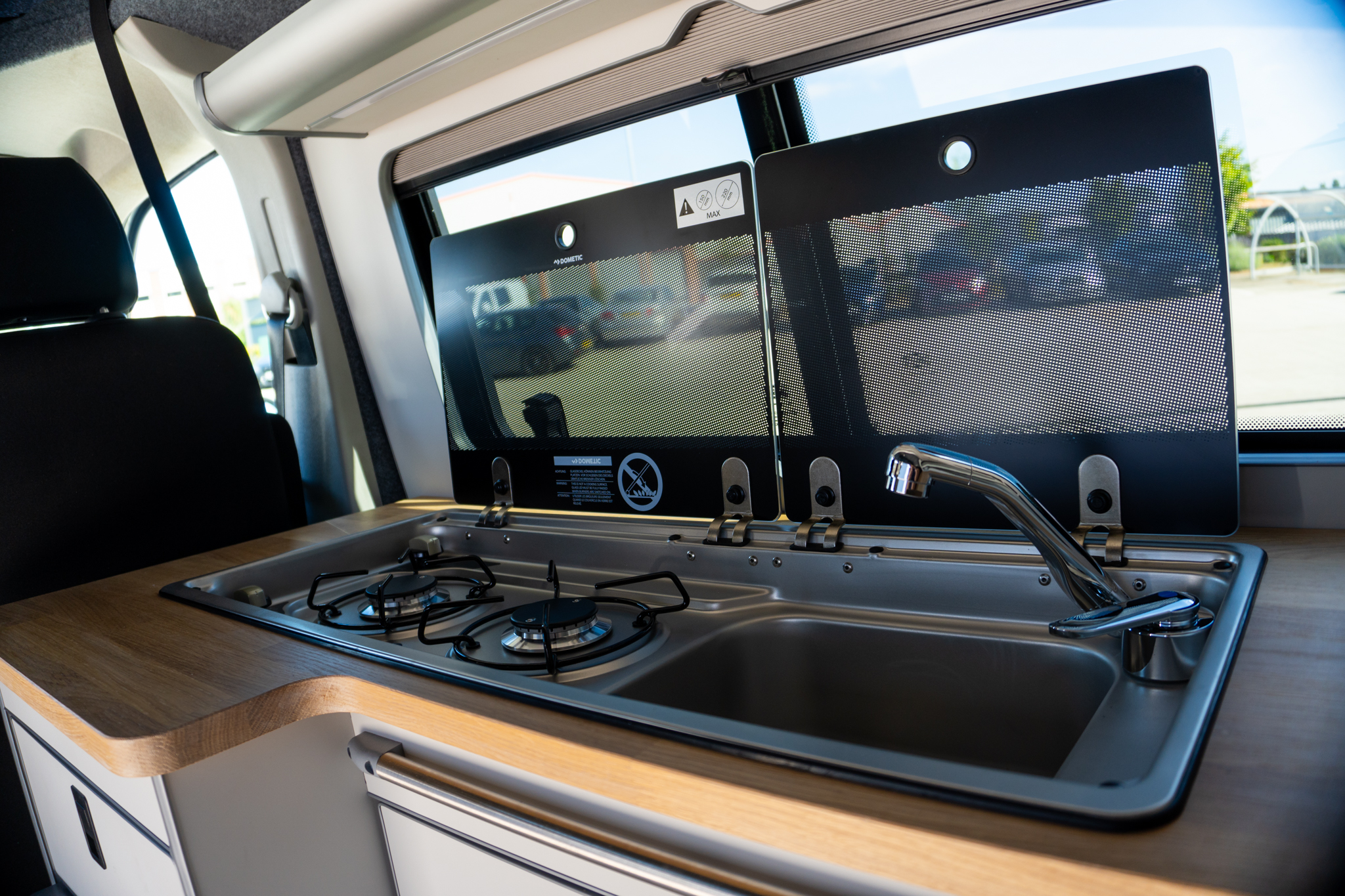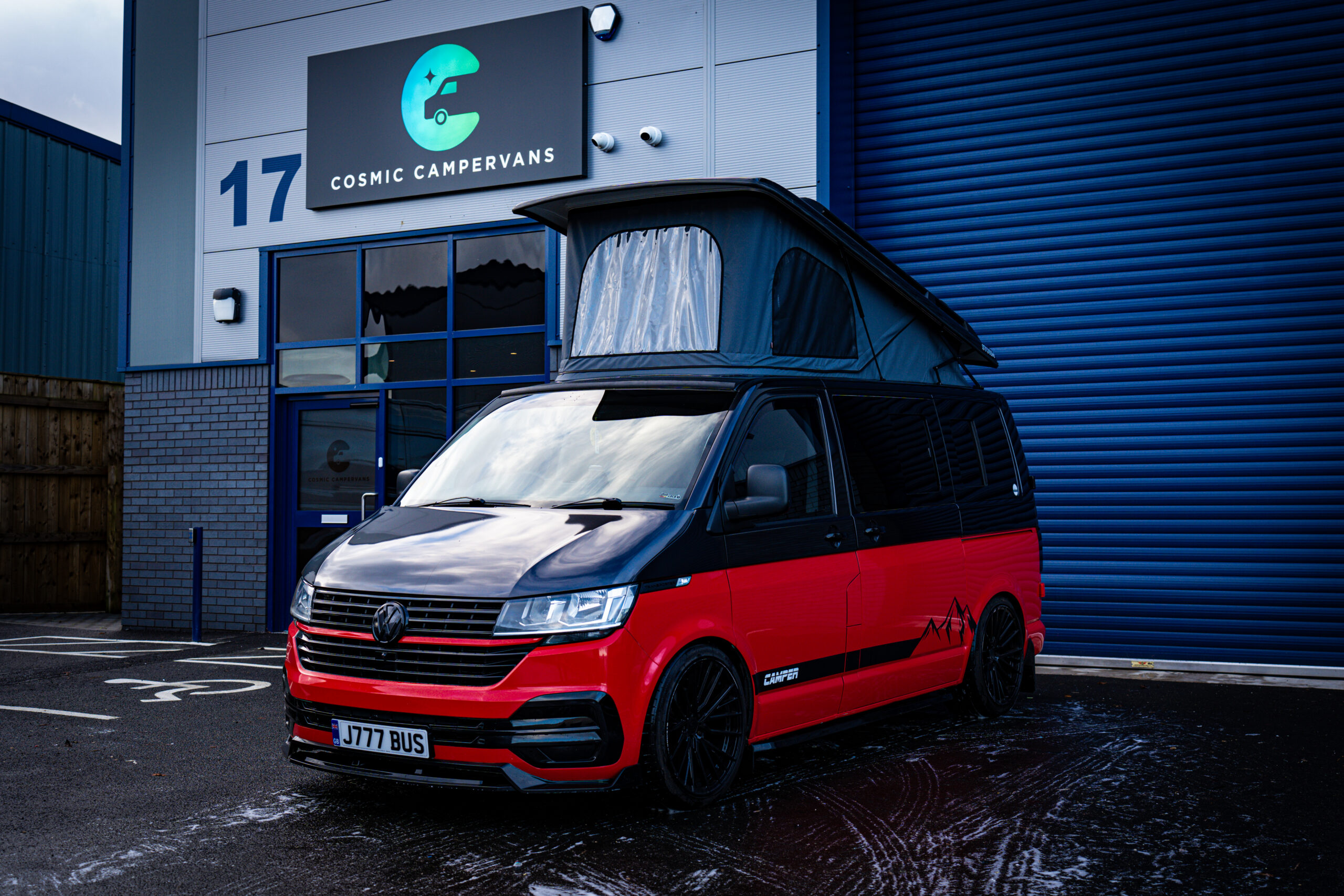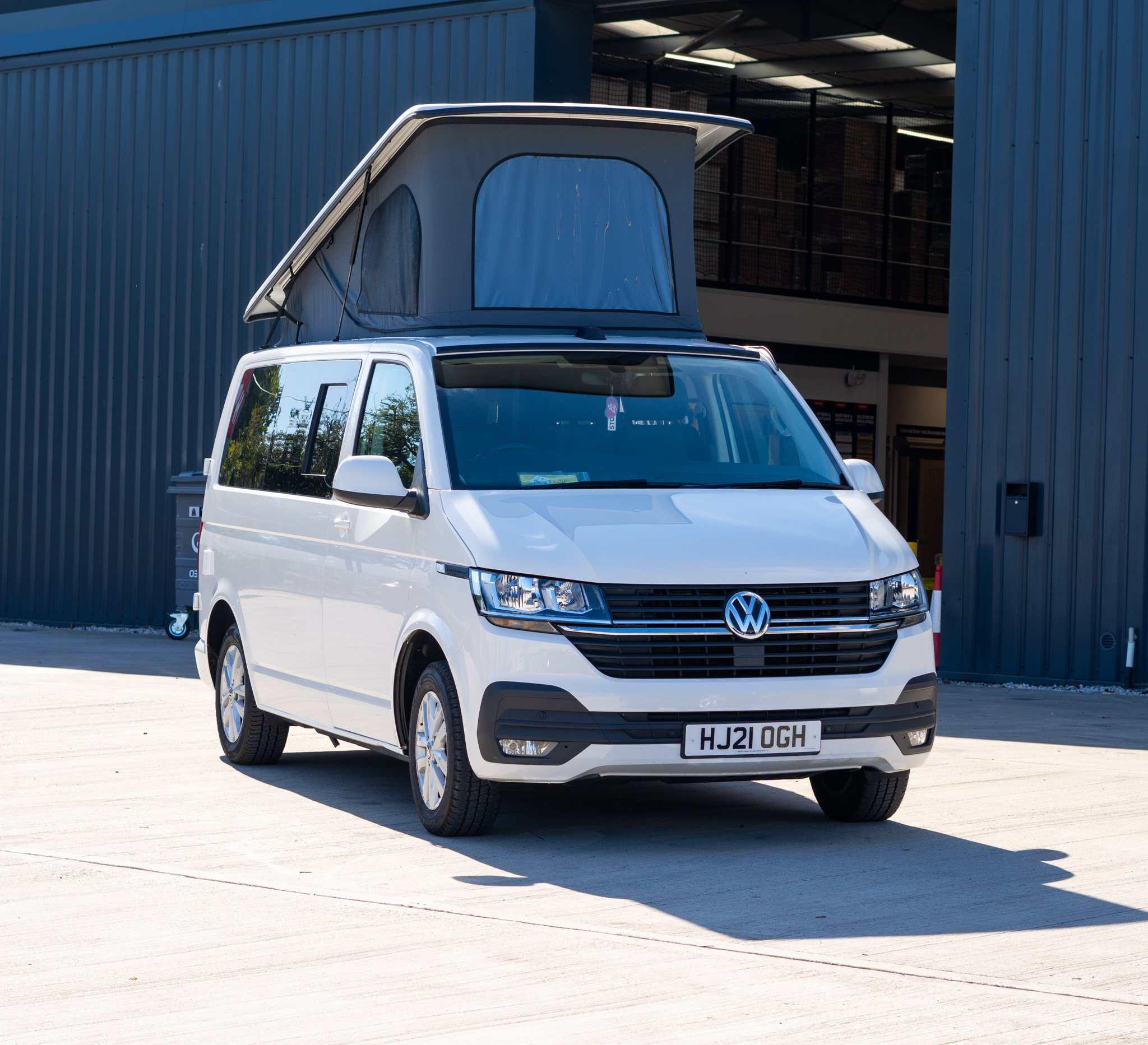Full VW Transporter Campervan Conversions: Complete Buyers Guide
The VW Transporter is very popular as a base van for campervan conversions. As a professional converter, I’ve worked on hundreds of these vans over the years, and I agree they are one of the best vans for campervan conversions. They are super reliable, comfortable and have great potential for a range of campervan layouts.
But with so many options out there, how do you choose the right one for your needs?
Whether you’re buying a base van for a full conversion, considering a pre-built camper, or deciding between 2WD and 4Motion, this guide will walk you through everything you need to know before taking the plunge. I’ll be sharing my firsthand experience to help you make the best decision for your budget and travel style.
Choosing the right model: differences between T5, T6, and T6.1 models
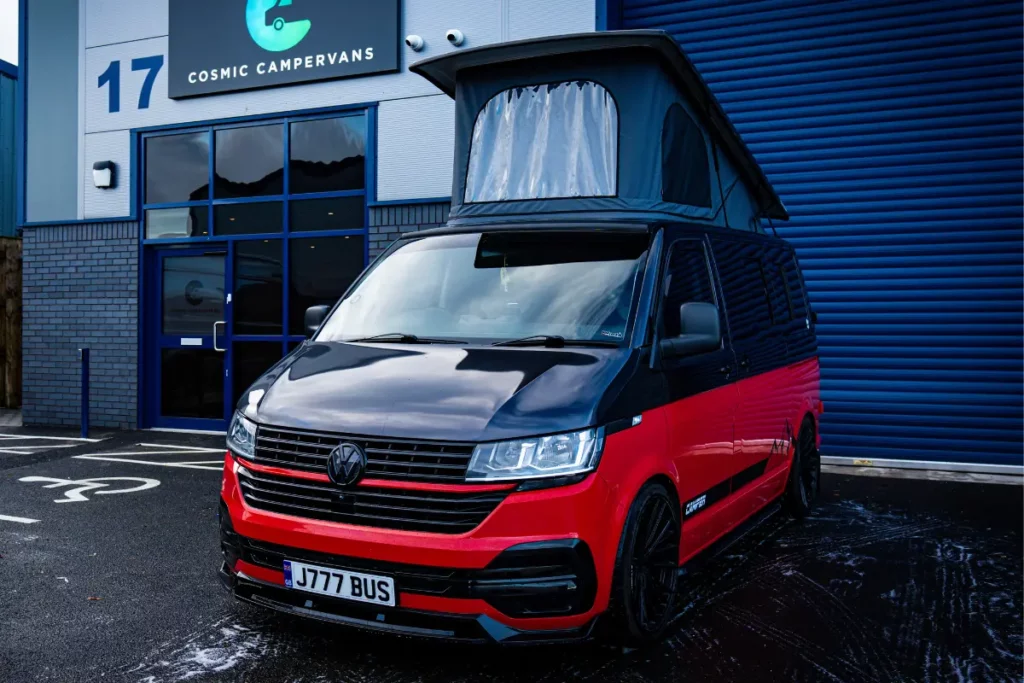
The latest VW Transporter models have very similar dimensions, but the key differences between them lie in the extras! You’ll see the biggest differences in safety features, fuel efficiency and tech.
VW Transporter T5 (2003–2015)
Best for: Budget-conscious buyers looking for a solid van without breaking the bank.
The T5 is like that reliable old friend: maybe a little rough around the edges, but dependable and affordable. These vans have been around for a while, meaning you can find one at a lower price compared to newer models.
Pros of a T5
- Cheaper upfront cost, especially for high-mileage models
- Loads of parts available (because they’ve been around forever)
- Still plenty of conversion potential
- Classic safety features like anti-lock braking system and stability control
Cons of a T5
- Older tech—expect a more “classic” driving experience (no fancy touchscreen here!)
- Can have higher mileage and wear & tear
- Less fuel-efficient than newer models
- Fewer safety features
VW Transporter T6 (2015–2019)
Best for: Buyers who want a balance between affordability and modern comfort.
In my opinion, the T6 is the perfect middle ground between the models. It’s newer, smoother, and more refined than the T5, but without the premium price tag of the T6.1.
Pros of a T6
- Better fuel efficiency than the T5
- Smoother drive with improved suspension and handling
- Quieter engine and better soundproofing (less rattling = more peaceful road trips)
- Modern safety features like emergency braking and the Driver Alert System for driver fatigue monitoring
Cons of a T6
- Still lacks some of the latest tech features found in the T6.1
- Slightly more expensive than the T5
VW Transporter T6.1 (2019–Present)
Best for: Buyers who want the latest technology, the smoothest drive, and are happy to spend a little extra.
Meet the T6.1, the most modern version of the Transporter, packed with all the fancy features you’d expect in a brand-new van. With an upgraded digital dashboard, improved steering, and a sleeker look, the T6.1 is the dream choice if budget isn’t a big concern.
Pros of a T6.1
- Top-tier tech, including a digital cockpit and better infotainment system
- More fuel-efficient and eco-friendly
- Improved power steering (hello, easy maneuvering!)
Cons of a T6.1
- Higher price: you’re paying for the latest and greatest
- Fewer used options on the market (so less chance of a bargain)
Transform Your VW into the Ultimate Camper
Save yourself the headache and let us do the heavy lifting! We’ve converted over 500+ VW Transporters.
My recommendation
Ok, so all things considered I really think there’s pros and cons to each VW Transporter model, so you’ll have to decide what’s best for you.
On a tight budget? Go for a T5 – plenty of great deals out there. I recommend the T5 especially for young vanlifers.
Want modern comforts without the T6.1 price tag? A T6 is your best bet. I recommend the T6 most often to young families who like the reassurance of extra safety features, but don’t have a huge budget.
Money no object and want the latest tech? The T6.1 is calling your name! In my experience, this is usually the best van choice for gray nomads who enjoy the finer things.
If you want to learn more about the nitty gritty of this topic, I wrote a whole blog on the differences between the VW T5 and T6.
Which engine type is best for a VW Transporter conversion
For years, diesel has been the go-to choice for VW Transporters, and for good reason: better fuel economy, more torque for heavy loads, and longer engine life. But with new environmental regulations and cleaner petrol engines, is diesel still the best choice?
Pros of a diesel engine for a VW campervan
- More fuel-efficient, especially on long road trips
- Better for heavy loads, like a fully kitted-out camper
- More torque (great for hills and towing)
- Generally longer-lasting engines if well maintained
Cons of a diesel engine for a VW campervan
- Diesel costs more to maintain (DPF filters, AdBlue, etc.)
- Higher emissions – not a very eco-friendly option
- Diesel cost more to buy – potentially a few extra thousand pounds.
- Lower frost resistance – may not be the best choice for frequent winter campers
Camp Comfortably in Every Climate
Make the smart upgrade—install a Diesel Heater in your van and be ready for cold-weather adventures.
Pros of a petrol engine for a VW campervan
- Cheaper to maintain (no DPF filters or AdBlue)
- Quieter and smoother drive than diesel models
- Better for shorter trips (diesels are better for long hauls)
Cons of a petrol engine for a VW campervan
- Worse fuel economy, especially for long-distance touring
- Less torque – not as great for carrying heavy camper gear
- Fewer petrol options available – most Transporters are diesel
My recommendation for engine type
Ok, so here’s my final thoughts. If you’re planning lots of long road trips, I recommend a diesel. If you’re mostly doing short trips or winter camping and want lower maintenance costs, petrol could work. Just be aware they can be harder to find!
What’s best between a 2WD and 4Motion (AWD) VW
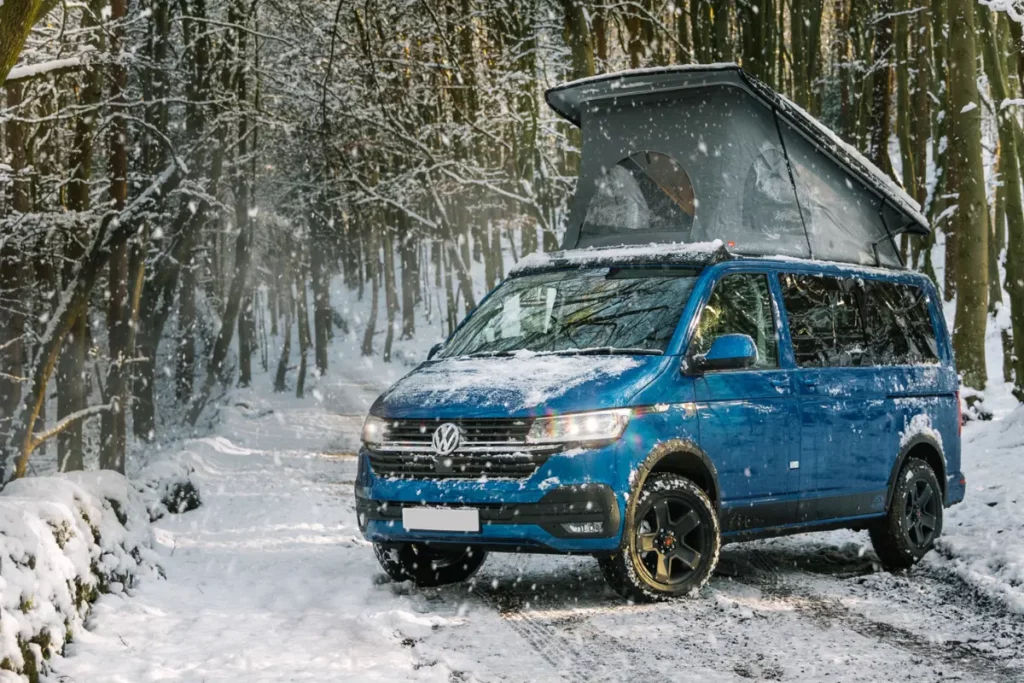
One of the biggest decisions you’ll face when choosing a VW Transporter for a camper conversion is whether to go for the standard 2WD or the all-wheel-drive 4Motion system. I’ve worked on both, and trust me, this choice can make a huge difference depending on where and how you plan to travel.
2WD is best for the majority of campers
Most VW Transporters come as front-wheel drive (FWD), which is more than capable for the majority of vanlifers. If you’re planning to stick to tarmac roads, campsites, and well-maintained trails, 2WD is the practical, cost-effective choice. It’s lighter, more fuel-efficient, and requires less maintenance over time.
I’ve converted plenty of 2WD Transporters for customers who just wanted a solid, comfortable camper for weekend getaways and road trips around the UK and Europe. They’re perfect for long drives because they’re more fuel efficient. They are also easier to service, and generally cheaper to insure.
The only downside? They can struggle on loose terrain like deep gravel, sand, or muddy fields. So, if you’re planning to venture off-grid a lot, 4Motion might be worth considering.
A cheaper middle ground is to get a 2WD and fit some All Terrain tyres. You still won’t be able to do any serious off-roading, but you’ll be less likely to get into trouble on dirt or gravel tracks. I recommend BF Goodrich all terrain tyres, I find they are the best value for money!
4Motion is ideal for off-grid travel
VW’s 4Motion system is a game-changer for anyone looking to take their camper off the beaten track. Unlike the standard 2WD, 4Motion provides power to all four wheels, helping you handle slippery conditions, steep inclines, and uneven terrain with ease.
I’ve worked on several 4Motion Transporter builds specifically for customers who wanted to explore Scotland’s rugged Highlands or wild camp in remote areas across Europe. If you love winter trips, wild camping, or simply don’t want to worry about getting stuck in a muddy festival field, this is the way to go.
The main trade-off is that 4Motion models are a lot more expensive, slightly heavier on fuel, and can cost more to maintain. But for true off-grid capability, it’s a worthy investment for some people.
My recommendation
I recommend choosing a 2WD if you’re mainly sticking to roads, campsites, and well-maintained routes. It’s cheaper, more efficient, and works for 90% of vanlifers.
If you’re undecided between the two, compromise by fitting some All Terrain tyres of a 2WD. In my experience, this will get you safely through a muddy field or a gravel road.
Go for 4Motion if you plan to regularly explore remote areas, drive in snowy or muddy conditions, or want extra security on unpredictable terrain. They are a hefty investment, so you want to be sure you actually need it.
If you’re unsure, I always recommend test-driving both to see how they feel. And if you need a hand deciding, feel free to drop a comment. I’ve helped plenty of vanlifers choose the right setup for their adventures!
What does LWB and SWB mean?
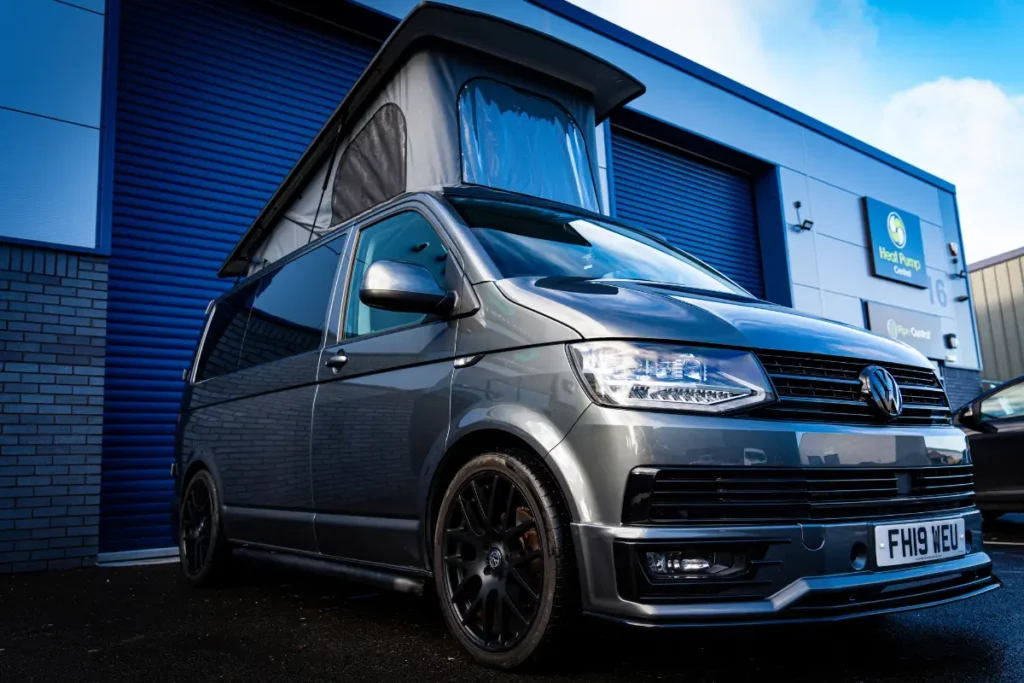
When choosing a VW Transporter for your camper conversion, you’ll come across two key terms: SWB (Short Wheelbase) and LWB (Long Wheelbase). This simply refers to the length of the van, but trust me, it makes a huge difference in how you use your camper.
I’ve done plenty of conversions on both SWB and LWB vans, and the right choice depends entirely on your travel style and what you need from your van.
The case for a SWB: best for maneuverability
A Short Wheelbase (SWB) Transporter is compact, easy to park, and great for navigating tight city streets or winding country roads.
If you mainly use your camper as an everyday car and take it away on the weekends, I recommend going for a SWB. I’ve built plenty of SWB conversions for couples or solo travellers who want a nimble, go-anywhere van. It’s also a great choice for people who aren’t used to driving big vehicles because it’ll have less drag than a LWB.
With a small campervan like a VW SWB, you still get a great layout with a rock-and-roll bed, kitchen, and some storage, just with a bit less room to move around inside. That’s why I usually recommend installing a pop top roof, especially for SWB vans, because you’ll be able to maximise the interior space.
Pros of an SWB
- Easier to drive and park—fits in standard parking spaces
- Lighter and more fuel-efficient than an LWB
- Better for city driving and winding roads
The only downside? You might feel a bit more limited in storage and living space, especially on longer trips. If you’re happy to pack light and don’t mind a more compact setup, an SWB is a solid choice.
The case for a LWB: best for families and full-time vanlifers
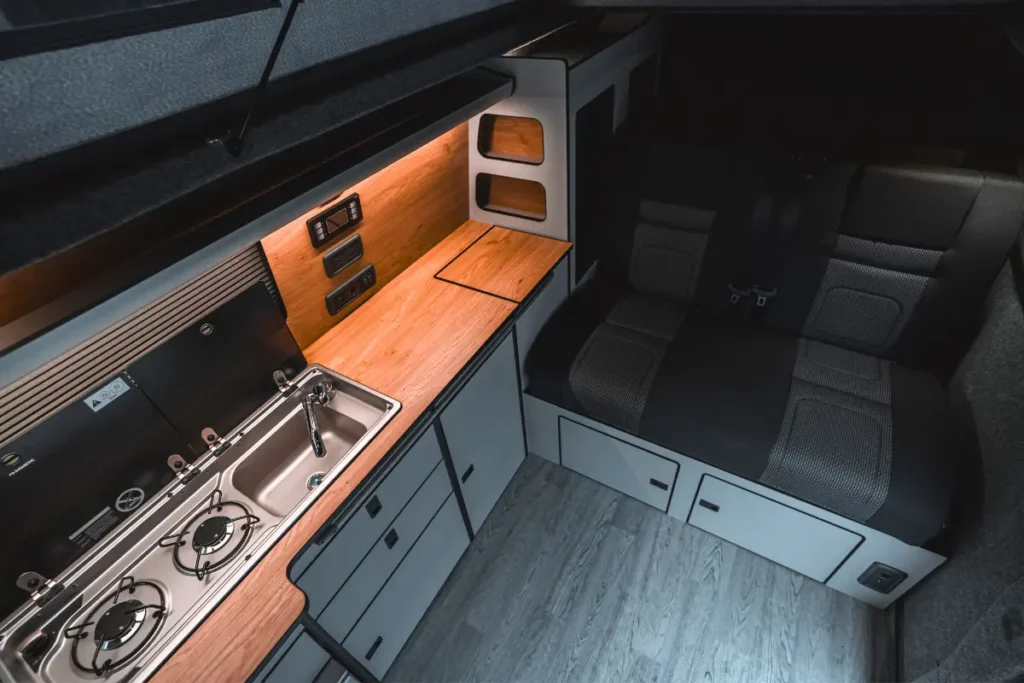
If you need more space for full-time van life, family travel, or just want a roomier camper, the Long Wheelbase (LWB) version is the way to go. The extra length gives you more room for storage, a bigger kitchen, or even a fixed bed setup.
Many of my LWB conversions have been for families who need extra seating and sleeping areas, or for vanlifers who want to live in their van full-time. The extra length makes a big difference in comfort, especially when you’re spending weeks or months on the road.
Pros of a LWB
- More interior space for a bigger kitchen, storage, or sleeping area
- More flexibility with layout options
The trade-off is that LWB vans can be trickier to park in standard spaces and slightly less fuel-efficient than an SWB. But if space is a priority, it’s absolutely worth it.
My recommendation
I recommend a SWB if you want a compact, easy-to-drive camper for weekend trips or short adventures. Perfect for couples and solo travellers who prioritise maneuverability.
Choose an LWB if you need extra space for full-time van life, family travel, or just want a more comfortable, spacious layout.
Full Conversion vs. Part Conversion: What’s Best for You?
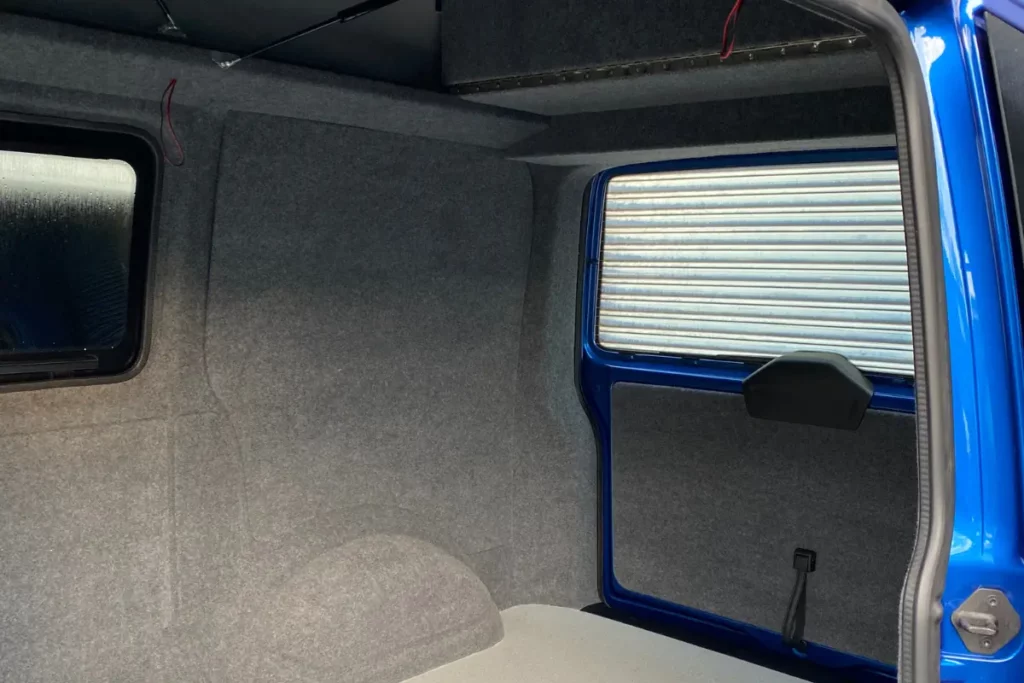
When you buy a van to convert to a camper you have some options. You can choose a base van, which has no conversions by the previous owner, or you can buy a van that has been converted (either in part or full) by someone else.
What to consider when buying a standard base van
If you’re starting with a blank slate (a standard VW Transporter with no conversion) this gives you the freedom to build exactly what you want. Many of my customers choose this route because they want a fully bespoke layout that suits their lifestyle.
My biggest tip when buying a base van is to spend as much as your budget will allow. A common conversion mistake people make is buying a cheap van and using the rest of their budget doing a really expensive conversion on it. When it runs into mechanical issues in a few years, they regret that decision, big time!
If you’d like more information on how much your VW campervan conversion will cost, check out my blog post!
Pros of buying a base van for conversion
- Customisation – You get full control over the layout, materials, and features.
- Budget Control – You can spread out the cost by doing a part conversion over time.
- Higher Quality – If you choose the right van and work with experienced converters, you’ll get a top-tier build.
Cons of buying a base van for conversion
- Time & Effort – A full conversion takes time, especially if you’re doing some of the work yourself.
For those who want a top-quality camper but don’t have the skills to convert it themselves, I always recommend working with an experienced converter (like us at Cosmic Campervans 😉).
A DIY build can seem like a good idea, but I’ve seen too many unfinished projects where people underestimated the complexity. Or worse, DIY conversion mistakes that cost thousands of dollars to fix, like a leaking pop-top roof.
What to consider when buying a pre-converted second hand van
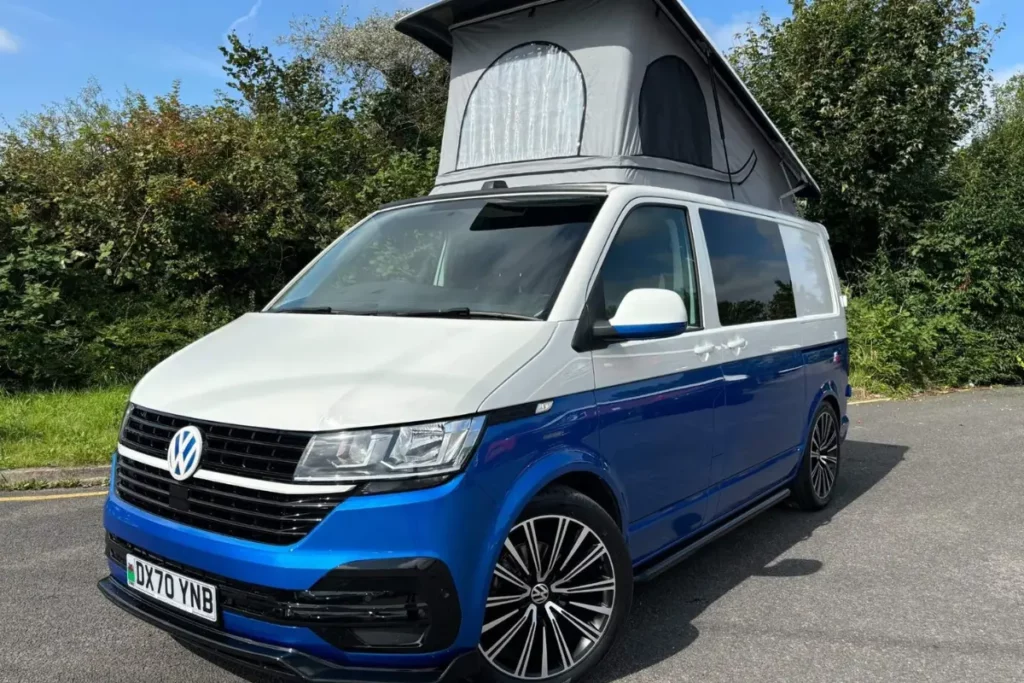
Buying a second-hand campervan that’s already converted can be a great option—if you know what to look for. I’ve inspected a lot of pre-converted vans for customers, and while some are great, others are full of hidden issues.
Pros of buying a pre-converted van
- Saves Time – You can hit the road straight away without waiting for a conversion.
- Often Cheaper – A second-hand van with a decent conversion can be more budget-friendly than starting from scratch.
- Easier Process – No need to manage a build; just check it’s in good condition and go.
Cons of buying a pre-converted van
- Limited Customisation – You’re stuck with the layout and design choices of the previous owner.
- Potential Hidden Issues – Poorly done conversions can have electrical problems, leaks, or bad insulation.
- Unknown Build Quality – Not all van conversions are made to last—some DIY builds can be a nightmare to repair.
If you’re considering a second-hand van, I strongly recommend inspecting it properly before buying. Here’s what to check:
Key things to check before buying a used base van
When buying a used VW Transporter, don’t just grab the first van you find! A little extra time spent inspecting it now could save you a fortune (and a major headache) down the line.
First up, mileage and condition. Lower mileage is usually better, but don’t write off a van just because it’s got a few more miles on the clock. If it’s been well looked after, with a solid service history and key parts like the timing belt and clutch replaced when needed, it could still be a great buy.
Next, let’s talk rust and bodywork. VW Transporters are tough, but rust can sneak up on them, especially around the wheel arches, sills, and underneath the van. A bit of surface rust is no big deal, but structural rust that’s eating through the metal? Walk away. Fixing that can be an expensive nightmare.
If the van already has some camper features installed, take a good look at the electrics and plumbing. Switch on the lights, check if the leisure battery charges properly, and make sure the gas system (if there is one) has been safely installed. Run the taps and listen for any dodgy noises.
Now, for the fun bit: test driving! Get behind the wheel and see how it feels. Any weird noises? Is the clutch smooth? Do the gears shift properly? If it pulls to one side or vibrates like crazy at higher speeds, it could be a sign of bigger issues. I always say trust your gut. If it feels off, it probably is.
And finally, get a pre-purchase inspection from a certified mechanic. Seriously, don’t skip this step. A professional can spot hidden problems that the seller might not mention (or even know about), potentially saving you thousands in repairs later on. It’s money well spent and could mean the difference between scoring a bargain and buying a money pit.
Key Takeaways
Choosing the perfect VW Transporter campervan comes down to understanding your needs, budget, and travel plans.
At the end of the day, the best campervan is the one that gets you out on the road, exploring and making memories. If you’ve got any questions or need advice on your build, drop a comment. I’ve helped plenty of vanlifers find their perfect setup, and I’d love to help you too!

